

jurutera to Covid-19
An Engineering Perspective


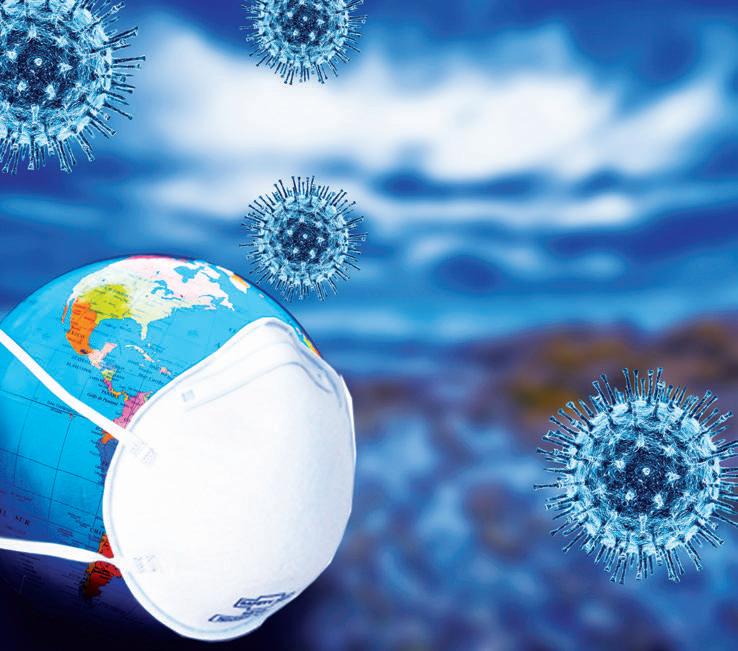

Until 30 September 2020




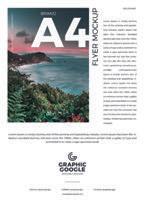



RM160
RM190
Until




Resuming Operations with Enhanced Protections
Back-to-Business Solutions for Office Buildings
As businesses around the world reopen and resume operations, people are getting back to work and back to their daily routines. Hikvision’s Temperature Screening Applications for Office Buildings integrate into security and access control systems in convenient ways that really work. Read on to learn how Hikvision’s applications can work for you and your business – today, tomorrow, and for years to come.
Work Areas and OfficesTemperature Screening with Access Control
Hikvision’s popular MinMoe Terminals add identity authentication, attendance recording and access control in office areas. Users can easily add or remove profiles, generate reports at regular intervals, and set parameters according to their unique needs including temperature screening and mask detection. Hygienic and touch-free, MinMoe access control terminals will enhance employee walkways with high accuracy and efficiency.

HIKVISION (MALAYSIA) SDN. BHD.
301, Level 3 of Menara LGB,No. 1 Jalan Wan Kadir,
Taman Tun Dr. Ismail, 60000 Kuala Lumpur
T +60327224000
F +60327224022
Sales Email: sales.my@hikvision.com





Temperature screening & mask detection & attendance and access with MinMoe terminals

Number 09, SEPTEMBER 2020
IEM Registered on 1 May 1959
MAJLIS BAGI SESI 2020/2021 (IEM COUNCIL SESSION 2020/2021)
YANG DIPERTUA / PRESIDENT
Ir. Ong Ching Loon
TIMBALAN YANG DIPERTUA / DEPUTY PRESIDENT
Ir. Prof. Dr Norlida bt Buniyamin
NAIB YANG DIPERTUA / VICE PRESIDENTS
Y.Bhg. Dato’ Ir. Ahmad Murad bin Omar, Ir. Dr Tan Chee Fai, Ir. Mohd Aman bin Hj. Idris, Ir. Dr Wang Hong Kok, Ir. Prof. Dr Leong Wai Yie, Ir. Mohd Khir bin Muhammad, Ir. Prof. Dr Ruslan bin Hassan
SETIAUSAHA KEHORMAT / HONORARY SECRETARY
Ir. Dr David Chuah Joon Huang
BENDAHARI KEHORMAT / HONORARY TREASURER
Ir. Chen Harn Shean
BEKAS YANG DIPERTUA TERAKHIR / IMMEDIATE PAST PRESIDENT Ir. David Lai Kong Phooi
BEKAS YANG DIPERTUA / PAST PRESIDENTS
Y.Bhg. Academician Tan Sri Datuk Ir. (Dr) Hj. Ahmad Zaidee bin Laidin, Y.Bhg. Dato’ Ir. Dr Gue See Sew, Y.Bhg. Dato’ Paduka Ir. Keizrul bin Abdullah, Y.Bhg. Academician Tan Sri Dato’ Ir. Prof. Dr Chuah Hean Teik, Y. Bhg. Dato’ Ir. Lim Chow Hock
WAKIL AWAM / CIVIL REPRESENTATIVE
Ir. Yap Soon Hoe
WAKIL MEKANIKAL / MECHANIC AL REPRESENTATIVE
Ir. Dr Aidil bin Chee Tahir
WAKIL ELEKTRIK / ELECTRICAL REPRESENTATIVE
Ir. Francis Xavier Jacob
WAKIL STRUKTUR / STRUCTURAL REPRESENTATIVE
Ir. Gunasagaran Kristnan
WAKIL KIMIA / CHEMICAL REPRESENTATIVE
Ir. Prof. Dr Lee Tin Sin
WAKIL LAIN-LAIN DISPLIN / REPRESENTATIVE TO OTHER DISCIPLINES
Ir. Dr Bhuvendhraa Rudrusamy
WAKIL MULTIMEDIA DAN ICT / ICT AND MULTIMEDIA REPRESENTATIVE
Ir. Jeewa Vengadasalam
WAKIL JURUTERA WANITA / WOMEN ENGINEERS REPRESENTATIVE
Ir. Rusnida bt Talib
WAKIL BAHAGIAN JURUTERA SISWAZAH / YOUNG ENGINEERS SECTION REPRESENTATIVES
Dr Yew Weng Kean, Mr. Kuugan Thangarajoo, Mr. Lim Yiren, Ms. Tiang Kor Lin, Mr. Tan Teck Ying
AHLI MAJLIS / COUNCIL MEMBERS
Y.Bhg. Dato’ Ir. Nor Hisham Mohd Ghazali, Ir. Toh Chin Kok, Ir. Dr Jeyanthi Ramasamy, Ir. Yim Hon Wa, Ir. Yam Teong Sian, Y.Bhg. Dato’ Ir. Fakharazi bin Wahijan, Ir. Yasotha Ramachandran Chetty, Ir. Mohmad Asari bin Daud, Ir. Ng Beng Hooi, Ir. Dr Lai Khin Wee, Ir. Dr Tan Kuang Leong, Ir. Mah Siew Kien, Y.Bhg. Dato’ Ir. Mohd Azmi bin Ismail, Ir. Ng Yong Kong, Ir. Dr Mui Kai Yin, Y.Bhg. Dato’ Ir. Noor Azmi bin Jaafar, Ir. Ting Chek Choon, Ir. Sukhairul Nizam bin Abdul Razak, Ir. Lai Sze Ching, Y.Bhg. Dato’ Ir. Dr Ahmad Anuar bin Othman, Ir. Dr Chan Swee Huat, Ir. Ellias bin Saidin, Ir. Mohd Radzi bin Salleh, Dato’ Ir. Hj. Anuar bin Yahya, Ir. Dr Teo Fang Yenn, Ir. Prof. Dr Jeffrey Chiang Choong Luin AHLI MAJLIS / COUNCIL MEMBERS BY INVITATION
Y.Bhg. Dato’ Seri Ir. Dr Zaini bin Ujang, Ir. Dr Lee Yun Fook, Ir. Fam Yew Hin PENGERUSI CAWANGAN / BRANCH CHAIRMAN
1. Pulau Pinang: Ir. Yau Ann Nian
2. Selatan: Ir. Wong Yee Foong
3. Perak: Ir. Simon Yeong Chin Chow
4. Kedah-Perlis: Ir. Haji Abdullah bin Othman
5. Negeri Sembilan: Ir. Dr Oh Seong Por 6. Kelantan: Ir. Shaipuddin bin Shapii
7. Terengganu: Ir. Abdullah Zawawi bin Mohamad Noor
8. Melaka: Ir. Puvanasvaran a/l Perumal
9. Sarawak: Ir. Haidel Heli
10. Sabah: Ir. Jeffrey Ng Vun Ping
11. Miri: Ir. Wong Siong Ung
12. Pahang: Ir. Ahmad Kamal bin Kunji
AHLI JAWATANKUASA INFORMASI DAN PENERBITAN/ STANDING COMMITTEE ON INFORMATION AND PUBLICATIONS 2020/2021
Pengerusi/Chairman: Ir. Prof. Dr Leong Wai Yie Naib Pengerusi/Vice Chairman: Ir. Fam Yew Hin Setiausaha/Secretary: Ir. Lau Tai Onn Ketua Pengarang/Chief Editor: Ir. Prof. Dr Leong Wai Yie Pengarang Prinsipal Buletin/ Principle Bulletin Editor: Ir. Dr Bhuvendhraa Rudrusamy Pengarang Prinsipal Jurnal/Principal Journal Editor: Ir. Dr David Chuah Joon Huang Pengerusi Perpustakaan/Library Chairman: Ir. C.M.M. Aboobucker Ahli-Ahli/Committee Members: Ir. Ong Guan Hock, Ir. Yee Thien Seng, Ir. Chin Mee Poon, Ir. Dr Oh Seong Por, Ir. Prof. Dr Abdul Aziz bin Abdul Samad, Dr Sudharshan N. Raman, Ir. Dr Lai Khin Wee, Ir. Tiong Ngo Pu, Ir. Dr Lee Tin Sin, Ir. Yam Teong Sian, Ir. Yap Soon Hoe LEMBAGA PENGARANG/EDITORIAL BOARD 2020/2021 Ketua Pengarang/Chief Editor: Ir. Prof. Dr Leong Wai Yie Pengarang Prinsipal Buletin/ Principle Bulletin Editor: Ir. Dr Bhuvendhraa Rudrusamy Pengarang Prinsipal Jurnal/Principal Journal Editor: Ir. Dr David Chuah Joon Huang Ahli-ahli/Committee Members: Ir. Lau Tai Onn, Ir. Ong Guan Hock, Ir. Yee Thien Seng, Ir. Dr Oh Seong Por, Dr Sudharshan N. Raman, Ir. Dr Lai Khin Wee Secretariat: Janet Lim, May Lee
THE INSTITUTION OF ENGINEERS, MALAYSIA Bangunan Ingenieur, Lots 60 & 62, Jalan 52/4, P.O. Box 223, (Jalan Sultan), 46720 Petaling Jaya, Selangor Darul Ehsan. Tel: 603-7968 4001/4002 Fax: 603-7957 7678 E-mail: sec@iem.org.my Homepage: http://www.myiem.org.my
Augmenting IEM
IEM Operations during Movement Control Order: Tales Untold
Covid-19 and Ventilation Engineering When New Academic Teaching Style is the Norm
LENS
Hanging High on the Wall
Challenges in Getting Started Again
Importance of Digitalisation during Covid-19
Visit to Miyata Plant, Toyota Motor Kyushu, Japan
FROM BRANCH
WE Sabah Helps in Fight Against Covid-19
My Son Sanctuary


DIMENSION PUBLISHING SDN. BHD. [ 199701034233 (449732-T) ]
Level 18-01-02, PJX-HM Shah Tower, No. 16A, Persiaran Barat, 46050 Petaling Jaya, Selangor Darul Ehsan, Malaysia. Tel: +(603) 7493 1049 Fax: +(603) 7493 1047
E-mail: info@dimensionpublishing.com Website: www.dimensionpublishing.com
CHAIRMAN
ROBERT MEBRUER
CEO/PUBLISHER
PATRICK LEUNG
GENERAL MANAGER
SHIRLEY THAM ● shirley@dimensionpublishing.com
HEAD OF MARKETING & BUSINESS DEVELOPMENT
JOSEPH HOW ● joseph@dimensionpublishing.com
PRODUCTION EDITOR
TAN BEE HONG ● bee@dimensionpublishing.com
CONTRIBUTING WRITERS
PUTRI ZANINA ● putri@dimensionpublishing.com
LAURA LEE ● laura@dimensionpublishing.com
SENIOR GRAPHIC DESIGNER
SUMATHI MANOKARAN ● sumathi@dimensionpublishing.com
GRAPHIC DESIGNER SOFIA ● sofia@dimensionpublishing.com
ADVERTISING CONSULTANTS
THAM CHOON KIT ● ckit@dimensionpublishing.com
ACCOUNTS CUM ADMIN EXECUTIVE
YEN YIN ● yenyin@dimensionpublishing.com
For advertisement placements and subscriptions, please contact: DIMENSION PUBLISHING SDN. BHD. [ 199701034233 (449732-T) ]
Level 18-01-02, PJX-HM Shah Tower, No.16A, Persiaran Barat, 46050 Petaling Jaya, Selangor Darul Ehsan, Malaysia. Tel: +(603) 7493 1049 Fax: +(603) 7493 1047 E-mail: info@dimensionpublishing.com
Subscription Department E-mail: info@dimensionpublishing.com
Printed by
PERCETAKAN SKYLINE SDN. BHD. (135134-V) No. 35 - 37, Jalan 12/32B, TSI Business Industrial Park, Off Jalan Kepong, 52100 Kuala Lumpur.
JURUTERA MONTHLY CIRCULATION: 22,500 COPIES
Submission or placement of articles in JURUTERA could be made to the:Chief Editor
THE INSTITUTION OF ENGINEERS , MALAYSIA (IEM) Bangunan Ingenieur, Lots 60 & 62, Jalan 52/4, P.O. Box 223 (Jalan Sultan), 46720 Petaling Jaya, Selangor. Tel: +(603) 7968 4001/4002 Fax: +(603) 7957 7678 E-mail: pub@iem.org.my or sec@iem.org.my IEM Website: http://www.myiem.org.my
© 2020, The Institution of Engineers, Malaysia (IEM) and Dimension Publishing Sdn. Bhd.
PUBLICATION DISCLAIMER
The publication has been compiled by both IEM and Dimension with great care and they disclaim any duty to investigate any products, process, services, designs and the like which may be described in this publication. The appearance of any information in this publication does not necessarily constitute endorsement by IEM and Dimension. There is no guarantee that the information in this publication is free from errors. IEM and Dimension do not necessarily agree with the statement or the opinion expresssed in this publication.
COPYRIGHT
JURUTERA Bulletin of IEM is the official magazine of The Institution of Engineers, Malaysia (IEM) and is published by Dimension Publishing Sdn. Bhd. The Institution and the Publisher retain the copyright over all materials published in the magazine. No part of this magazine may be reproduced and transmitted in any form or stored in any retrieval system of any nature without the prior written permission of IEM and the Publisher.
PRACTISE THE NEW NORMS COVER NOTE
by Ir. Prof. Dr Leong Wai Yie Chairman, Standing Committee on Information & Publications
To all IEMers,
IEM has hosted its first online AGM as well as talks, seminars, meetings and conferences. The Covid-19 pandemic has transformed the lives of humans everywhere and we have had to adapt to these “new norms”.

No nation is exempted from these challenges as Covid-19 has resulted in a high rate of fatalities. Our health, safety and well-being are of primary importance during this time of crisis.
Examples of the “new normal” are the wearing of masks, washing hands frequently using soap, using hand sanitiser, maintaining physical distancing etc. All these are deemed effective in helping to curb the spread of Covid-19. Hopefully, everyone will regard the pandemic as an invaluable life lesson and make personal hygiene a priority, even after the pandemic subsides.
There is also a crucial need to transform businesses to suit the current circumstances. Around the world, economies are cautiously reopening. Businesses are keeping a close eye on the here and now but are also tentatively looking ahead to what’s shaping up as a great reset. Conventional and traditional businesses must change their modus operandi to ensure they are on par with modern, high-tech companies. NGOs can co-organise courses to help businesses garner information with regards to ways to digitalise businesses and maximise awareness of consumer trends.
The Editorial Board wishes everyone “Stay Safe and Healthy”. Let’s continue to engineer our country to greater heights!
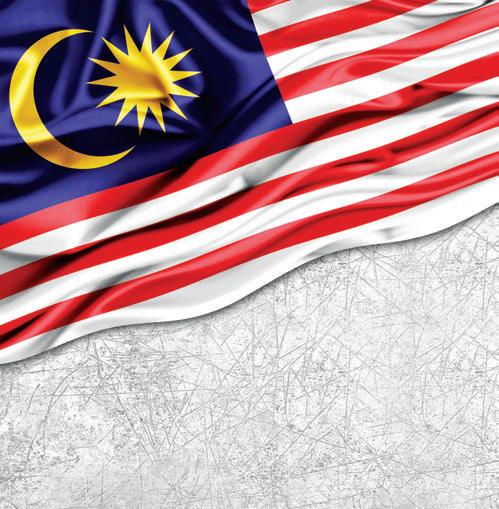


IEM OPERATIONS DURING MOVEMENT CONTROL ORDER:
TALES UNTOLD
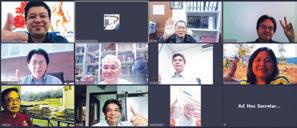

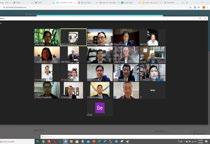
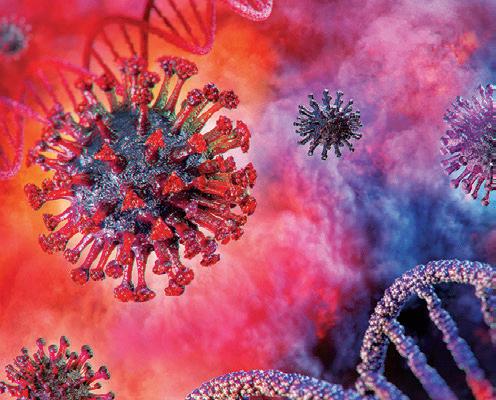





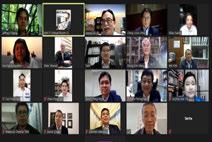
THE NEW NORMAL

The last few months had been an extremely challenging time for all of us as we experienced the unprecedented crisis of the COVID-19 pandemic which affected not only Malaysia but also the rest of the world. The pandemic dramatically changed the way we did things and like everyone else, IEM also had to adjust to the new normal.
In this article, I would like to share some of the backroom experiences and behind-the-scene stories of the Secretariat team, the backbone of IEM during this difficult period.
At the last Council meeting on Monday (16 March), the coronavirus was already a subject of great concern to everyone. In fact, some members had suggested that the meeting be cancelled. Earlier in the day, the Registrar of Societies (ROS) had issued a special directive that associations and societies would not be allowed to hold any “mass gathering” activity, including meetings and AGMs until 30 June.
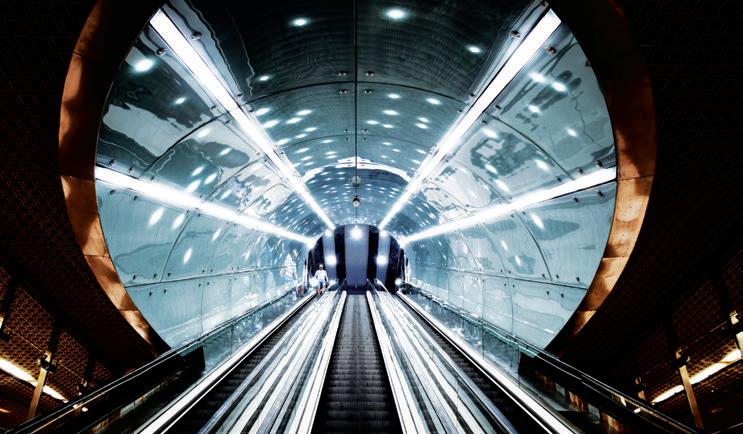

A clear decision was made at the Council meeting that IEM should strictly comply with the directive with no exception. At the time, speculation was rife that the new government, fresh in the office after a fortnight of high drama in politics, would impose movement restriction to curb the spread of the virus.
As we usually did after each Council meeting, the President, Deputy President and I were having an “extended meeting” in D’Place, the new dining area in Wisma IEM, when the Prime Minister announced that a Movement Control Order (MCO) would be imposed from 18 March.
The next morning, the Secretariat worked frantically to put in place an action plan for its employees to work from home for the first time. The priority was for the team to continue providing efficient and uninterrupted service to support the office-bearers and members during this period. The Secretariat staff rushed to copy e-files and prepared to notify members of the office closure etc.
During the MCO, the web-portal and emails would be the main communication channels between the Secretariat and members. However, it was found that these were insufficient and that information was not reaching members fast enough. Some email addresses of members were also found to be no longer valid and so the announcement/ information went into the Junk/SPAM folders. In such cases, members were advised to set IEM mails into the safe senders list. IEM then resorted to
other forms of communications that could disseminate useful information and latest updates to members fast: Telegram and Instagram.
It was also decided that during the MCO, all official meetings of IEM committees, technical divisions etc. would be conducted via teleconferencing. In fact, the Excomm meeting on 6 April would probably go into IEM history books as the first official Excomm meeting conducted via tele-conferencing.
However, the choice of which platform to use for tele-conferencing proved rather difficult, mainly due to the many available options as well as reports of the lack of security of some of the platforms. IT specialists including Cybersecurity Malaysia were
consulted for independent advice on this and after serious consideration, we decided to adopt the commonly used Zoom Meeting platform. To ensure security, IEM subscribed to this platform for all meetings.
AD HOC COMMITTEE ON COVID-19
With the MCO coming into effect, one of the earliest actions taken was to form an ad hoc committee on COVID-19, comprising the President, Deputy President (President-Elect) and other senior office-bearers including the Vice Presidents.
The Terms of Reference (TOR) of the ad hoc committee included providing recommendations on what IEM could do to assist members during the MCO period as well as to support the government. Virtual meetings were held every Wednesday afternoon to discuss matters related to meeting the objectives specified in the TOR.
First, a quick survey was conducted among Corporate and Graduate Members to gather feedback on the impact of COVID-19 pandemic. For a rapid 3-day survey, I would say the response was acceptable, with some pretty good responses from members who highlighted the problems they faced and those who offered
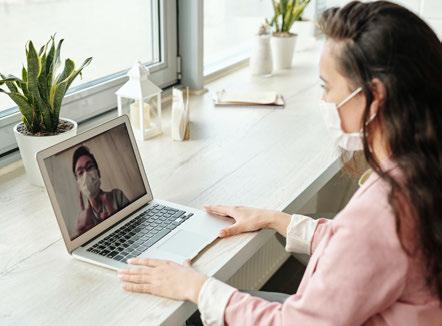
Ir. Mohd Khir is a Vice President of IEM. He was the Honorary Secretary from 2018-2020.
by Ir. Mohd Khir Muhammad
suggestions on what the government could do to help the industry.
IEM then wrote to the Prime Minister, the Minister of Finance and the Minister of International Trade & Industry (MITI) to offer our assistance to the Government where relevant. We compiled all the feedback from members and submitted them to the government, together with suggestions on how IEM could help mitigate the impact of the pandemic, especially on our industry.
The government gave serious consideration to our reports and IEM was invited to attend meetings with the Economic Action Council thereafter, on issues related to the industry as well as the MITI task force on construction sectors.
As the situation due to the pandemic was very dynamic and fluid, most of the time, urgent actions were required from IEM. Requests for information/feedback/meeting attendance came with very short notice, sometimes only a couple of hours.
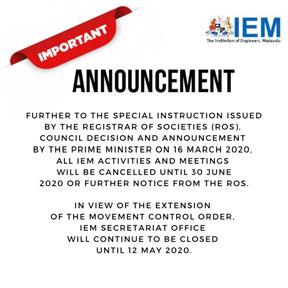
Overall, the ad hoc committee, working from home with limited access to information from the IEM server and supported by the reliable and efficient senior Secretariat staff members, was generally doing well to meet the tight timelines. Dissemination of information on actions taken by IEM was in the form of e-circulars, e-announcement and e-newsletters.
The IEM JURUTERA bulletin for April and May could not be printed but to ensure members receive JURUTERA on time, IEM sent out e-JURUTERA by email blast and members had a new experience of reading it on their mobile phones.
RISE OF WEBINARS
As events and activities were not allowed until the end of June, a main concern of many members, especially Corporate Members, was whether they could fulfill the BEM

CPD requirements. Thanks to current technology and internet speed, Webinar, the online presentation held via internet in real-time, offered a temporary solution to overcome this problem.
IEM had subscribed to the GoToWebinar platform which enabled us to conduct online webinars for 100 participants per session but due to overwhelming response, we had to increase the capacity to 500 per session. Webinars also enabled IEM to provide additional service/benefit to members from branches.
SUPPORT FROM IEM SECRETARIAT TEAM
I would not be doing justice to the IEM Secretariat if I didn’t mention how hard they had worked during this challenging time.
The Secretariat team continued to work efficiently and remained united as a team with a clear mission to provide the best service to our
members. Despite challenges such as not being able to retrieve files from the server, the lack of facilities for working from home and inadequate mobile data plans, they did their best to accomplish tasks where possible.
The IT department was probably one of the busiest departments as it arranged virtual meetings and webinars for the first time, ensured that information was disseminated quickly and looked into new ways to communicate with members.
Was there anything positive for IEM from the COVID-19 pandemic? Well, for one, it really changed the way we did things. Methods previously thought to be impossible were accomplished and it was obvious that IEM activities in future would depend a lot on Information Technology.
As such, IEM will have to give serious consideration to enhancing its IT infrastructure and systems as well as training and upskilling the staff members to meet this requirement.
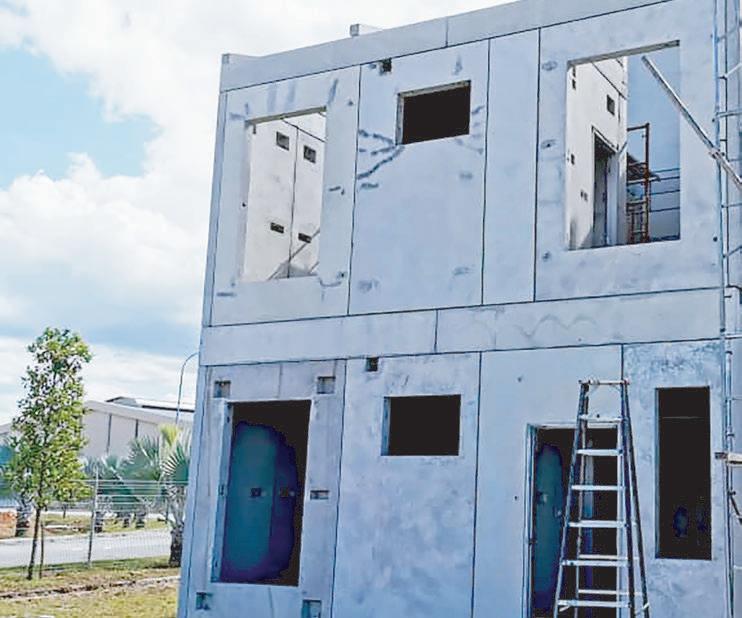
PRESIDENTIAL ADDRESS st61
Ir. ONG CHING LOON SESSION 2020/2021
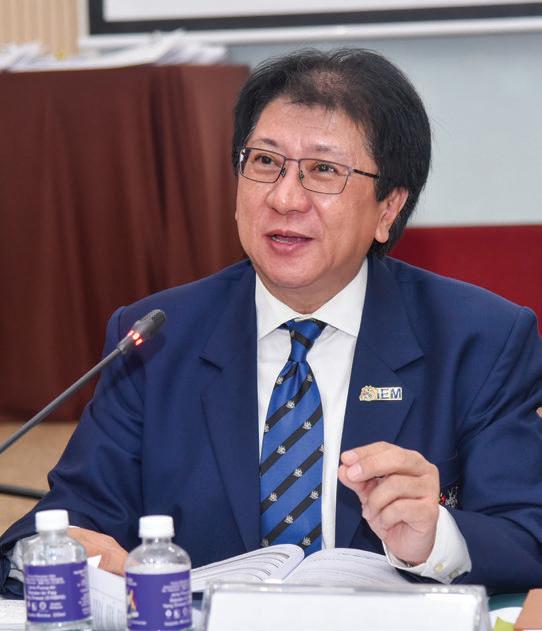
Ir. Ong Ching Loon is the Managing Director of Cofreth (M) Sdn. Bhd. and COFM International (Middle East) LLC which specialise in consultancy and out-sourcing services of Facilities Management (FM), Green Building Commissioning & Energy Efficiency for industrial plants and commercial buildings. Under Ir. Ong’s transformational leadership, Cofreth has, over a span of 10 years, won 5 Frost & Sullivan Excellent Awards on Facilities Management and Green Services and a BrandLaureate SME Best Brand Award on Corporate Branding for Industrial Facilities Management. He has also led Cofreth to be accredited yearly with 5 ISOs in Quality, OHSAS, Environmental, Energy and Facility Management System.
Ir. Ong holds a MBA from the University of Bath, UK and a BSc Hons degree in Mechanical Engineering. His professional qualifications include Practising Certificate
(Peng.PC), ASEAN Chartered Professional Engineer, ASEAN Engineer and certified Energy Management System (EnMS) Expert (Unido). Among his major milestones are his appointments as Alternate Chairman of the Main Drafting Committee of Energy Efficiency & Conservation Act (EECA) by the Ministry of Energy (2018) and Senior Energy Consultant for Malaysia by Carbon Trust of UK for its “Low Carbon Energy Programmes (LCEP)”, funded by Foreign & Commonwealth Office of the UK Government (2019-2023). He also won various government and industry awards, including Pingat Jasa Kebaktian (PJK - Penang State, 2005) for his exemplary national service. He also holds leadership positions in various public and private institutions as well as memberships in many institutions relating to engineering services and technologies.

AUGMENTING IEM
Respected Past Presidents, Immediate Past President, Deputy President, Council Members and fellow engineers,
I stand before you this morning, with profound gratitude and great humility as I take over the presidency of The Institution of Engineers Malaysia (IEM) for the 2020/2022 sessions from my honourable predecessor. I wish to take this opportunity to express my sincere gratitude to the IEM Council for their support and I am honoured by the trust and confidence placed upon me. I shall strive to carry out this honourable responsibility with utmost care and diligence, emulating and continuing the good work of my predecessors.
In fact, each time we gather to inaugurate a President, we bear witness to the enduring strength of our Institution. We recall that it was the vision, dedication, sacrifice and the spirit of volunteerism that had bonded this Institution from a humble beginning with 60 members in 1959 to more than 50,000 members today. Recognising that engineers are not just nation builders but more so as prime movers of national development, the responsibility that rests on the shoulders of IEM Presidents is rather heavy and challenging.
MY FELLOW ENGINEERS, Ladies and Gentlemen,
The IEM Constitution and Bylaws are drafted in such a way that all Deputy Presidents would serve as Chairman of the Standing Committee on Finance before the chain of office of the President is handed over to him. Our founding fathers had the foresight that chairing the Finance Committee would enable the Incoming President to familiarise himself with the running of the Institution, especially where finance is concerned. I must say that the last two years chairing the Finance Committee had enabled me to look at the future growth of the Institution in a more structured way.
Over the past 61 years, thirty-four (34) extraordinary, distinguished and eminent engineers from different segments of the engineering fraternity have served as Presidents of IEM, all being groomed in the same way. I would like to thank our Immediate Past President, Ir. David Lai Kong Phooi, for his selfless service to the Institution throughout his two-year presidency. I would also like to thank other Past Presidents for their guidance and I shall continue to follow their legacy.
Having considered the future of IEM on this note, I have therefore framed the theme of my Presidential Address this morning as “Augmenting IEM”. To augment is to make something greater by adding to it. My focus during this session is to continue the efforts of my predecessors by making IEM stronger, bigger and to strengthen our position to another level. With this in mind,
I have developed four (4) strategic goals. These are:
1. Accentuate The Branding of IEM
2. Position IEM as the Essential Technical Hub Nationally & Internationally
3. Increase Member Value and Engagement, and
4. Adopting the New Normal
These goals are intertwined and have significant impacts on the masses, government and industry besides capacity building and engaging our members both at headquarters and branches. They also help to improve the financial position of IEM.
Now, please allow me to elaborate on the first goal:
1) ACCENTUATE THE BRANDING OF IEM
IEM is 61 years old this year and is one of the oldest and largest professional bodies in the country. Over the years, my predecessors and their Councils had successfully made the IEM brand more visible and prominent to the government, the public and the industry and I would like to augment this brand.
To me, branding is about making an emotional connection. It is about “first in sight, first in mind”. It is about the cognitive correlation between engineering and IEM and vice versa. It is also about a shared belief among the masses that equates engineering to IEM and this conscious or subconscious recognition is generated spontaneously. I would like to heighten the brand IEM to this level. To do this, I will need the support and involvement of all the IEM Branches and the active participation of IEM members. This goal has great potential and we would be able to achieve great outcome and impact when we work together as one and not as disparate entities.
Among my main focuses on accentuating the brand of IEM are, first of all:
a. Inaugural IEM Convention and Engineer 2021
With the need to further boost the IEM brand, I initiated the “IEM CONVENTION” last year. This will be our very own national convention which will be synonymous with IEM. This convention, with its signature conference and exhibition named “ENGINEER”, will be the first event that will bring together all disciplines of engineering in one convention. As you are aware, IEM has, over the years, organised numerous symposiums, conferences and exhibitions on a smaller scale specific to each discipline championed by the Technical Divisions of IEM and we are proud to note that each of the events organised has been successful. However, these were all held independently for the individual disciplines.
The “ENGINEER” will position itself as “the IEM convention” that encompasses all the disciplines aimed at to showcase the latest technologies in Science, Technology, Engineering & Mathematics (STEM). This signature event was to have been launched in September 2020 but it was derailed by the onslaught of the COVID-19 pandemic. We have therefore
PRESIDENTIAL ADDRESS 2020
delayed the launching of ENGINEER to September 2021 and we hope to get the support of all IEM members and the industry for this event which will also become an income generator for IEM.
The event will promote the IEM brand throughout the country and internationally through scheduled publicity campaigns and promotional programmes. We have in fact, received confirmation of support for this Convention from nine (9) government agencies and professional bodies. With the country going into post Recovery MCO, we will again work hard to bring more supporters on board for ENGINEER 2021.
b. Engagements with Ministries, Local Authorities and Industry
Thanks again to my predecessors as well as IEM members at Headquarters and Branches, in recent years, IEM’s name had been well promoted to the Ministries, Local Governments and the Industry. We do receive numerous requests for representatives to be appointed to serve in various Committees, whether at HQ level or at the Branch level.
I believe that collaborating with local governments will be the cornerstone of our efforts to promote IEM. Specifically, I believe that fostering respectful, cooperative relations with the government ensures that the position of our profession and our members will be well considered in Government policies and decision-making.
Continuing the achievements of IEM in recent years, I will also step up on efforts to demonstrate how the government and the Institution’s goals are aligned. My focus would not only be at the Federal level but more importantly, also at State level. It is my fervent hope that our Branches are able to be engaged by the State governments to address concerns on various technical issues in engineering services at State level.
IEM made a lot of progress in this area, especially during the MCO where we were invited by the Economic Action Council chaired by the Prime Minister, MITI (Ministry of International Trade & Industry) and the Ministry of Finance to submit proposals or recommendations on various matters affecting the industry due to the COVID-19 pandemic. IEM had engaged with the government through various meetings to channel the feedback of IEM and IEM members which we had compiled from the results of members’ surveys. As the Chair of the Ad Hoc Committee on COVID-19, I had meetings with my Committee on a weekly basis to discuss and brainstorm on ways to assist the engineering professionals and industry during the MCO. The Committee generated specific yet impactful recommendations to the government on economic recovery during the pandemic.
While we reach out to both Federal and State Government, I would also like to focus our outreach to the industry where IEM membership is relatively low. We need to share with the captains of industry that their employees with IEM membership will bring a difference to their corporations through enhanced technical knowledge,
ethical values, professionalism and networks. We will hold dialogues with industries such as those in semi-conductor manufacturing, aerospace, automotive, transportation, agriculture, energy and marine.
I plan to further enhance our team of representatives to outside organisations to be more effective in the delivery of the aspirations and strategic plans of IEM.
MY FELLOW ENGINEERS, Ladies and Gentlemen, my second goal is:
2) TO POSITION IEM AS THE ESSENTIAL TECHNICAL HUB, NATIONALLY & INTERNATIONALLY
As we all know, the rate of change in technology is immense. Technology is transforming our habits, and the routines of our work and our personal lives. Technology will continue to grow, accelerate and change business for the foreseeable future. The most successful companies are those which continuously learn, grow and adapt to the changing technology and, for that, IEM must position itself at the forefront in this world of fast-growing technology. As engineers, we cannot be left behind or be followers. We should be the initiators or leader as the abbreviated title of “Ingenieur.” is derived from the Latin word “ingenium”, which means ingenuity.
Borrowing from the wisdom of Theodore Von Karman – “Scientists study the world as it is; Engineers create the world that never has been”. Therefore, we, being engineers need to be creative and diversify ourselves to stay relevant in the industry and my focus in this area will be:
a. Publication of IEM’s own Guidelines, Best Practices, Manuals and Codes of Practice etc.
After sixty one years, I believe it is an opportune time to bring our own publications to another level. We have in IEM’s structure, 18 Technical Divisions including the YES and the WES and the 5 Special Interest Groups comprising of experts in the respective fields. With IEM being the largest professional body of engineers in the country, we should be leading the engineering industry, guiding them with our profound knowledge though guidelines, manuals, best practices, industry benchmarks and even IEM standards.
One of my aspirations is for IEM to compile the immense knowledge of our talented members of all disciplines and to publish the expertise as handbooks of IEM for adoption by the engineering industry, not just in Malaysia but also internationally. IEM had published a Guide On Flood Abatement last year, from the talents of the Disaster Risk Reduction Advisory Board. A white paper on Electrical Installation Standards & Regulations in Buildings amongst ASEAN Countries which was presented at the International Electrotechnical Symposium last year was the accumulation of expertise from our Electrical Engineering Technical Division working with Energy Commission and Standards Malaysia.
With the pool of talents amongst our Technical Divisions and branches, I am confident that IEM can produce many more of these IEM brand guidelines, best practices,
handbooks and standards for use by the industry. This will bring IEM to another level which is rightfully where we should be – a referral point or resource centre for standards or technical expertise. It is my aim to realise this potential and to generate some revenue for IEM in the near future.
b. Members and Branches to support writing of standards.
Here again, I would like to stress that it is through the publication of IEM handbooks that we can build capacity of all subject matter experts from our members at headquarters and the 12 branches, including young engineers. It is hoped that IEM can aggregate and share these knowledges sustainably.
MY FELLOW ENGINEERS, Ladies and Gentlemen. My third goal is:
3) INCREASE MEMBER VALUE AND ENGAGEMENT
Members form the nucleus of IEM and I can confidently say that IEM’s success for the past 60 years has been made possible by our dedicated members who serve in the Council, various Committees and Technical Divisions both at the IEM Headquarters and Branches.
Besides members serving in IEM Committees and engaging in IEM’s operations and administration, our general members also are also contributing to IEM in one way or another. In order to increase IEM’s value, member engagement is very important and IEM needs to be member-centric in a majority, if not all, of our actions and decisions. We have, in the last session, through the efforts of the Honorary Secretary and Secretariat, initiated some form of engagement with members through the IEM Instagram and Telegram. Our intention was to enable news and information to reach members faster. This effort was accelerated, especially during the MCO, where we posted 9 circulars and numerous e-News for members’ information via these two platforms.
We also have, in our portal, a feature where we can SMSblast information to members but this method will be costly to IEM in view of our member size of 50,000.
Therefore, we hope members would join the IEM Telegram channel so that we can reach you more efficiently. Nevertheless, as we move into the era of Industry 4.0, engagement need to be further enhanced. Over the last six months, as the Chairman of the Finance Committee, I initiated discussions with an App developer to introduce an IEM Mobile Application.
a. Introducing an IEM Mobile App
The IEM Mobile App will be a personalised IEM app to instill a sense of belonging among members. The aim is to:
1. Foster cooperation among members
2. Disseminate information including channel for e-Jurutera
3. Enable interactive communication with multi-tiered subcommittee capability
4. Transform lifestyle with digital welfare services.
PRESIDENTIAL ADDRESS 2020
Apart from these 4 core ecosystems, I would also like this community App to include features such as creation of events for meetings, classes and to allow members to scan a QR code for attendance and to exchange business cards. The App should be able to integrate a survey and an election besides providing a digital market place for extending welfare services to our members across the nation. The possibilities can be extensive and digital advertising to generate income for IEM can materialise with this mobile App. The work on IEM Mobile App is well underway and we will endeavour to launch this mobile app within a year from now.
b. Organise Webinars Regularly
IEM had in the past organised numerous evening talks, technical visits, courses etc for the benefit and professional development of members. Nevertheless, with the announcement from ROS on 16 March this year, forbidding all societies to conduct meetings and activities involving gathering of large numbers of people until 30 June, IEM had to immediately restructure ourselves to look for ways to adapt to this restriction.
On 6 April 2020, the first IEM ExComm meeting since the implementation of the MCO, was conducted virtually via ZOOM. All 19 members of the ExComm attended this virtual meeting together with the IEM Secretariat. This was a historic moment, one which I am sure will go down in IEM history. On 18 April 2020, we initiated the first IEM webinar by the Engineering Competency Development Committee. Through subsequent ad hoc Committee meetings, more webinars were organised. IEM is thankful for the unwavering support of Technical Divisions and SIGs.
I am proud to inform that this initiative was a resounding success. As at 11 July, IEM had organised 70 webinars by various Technical Divisions on topics ranging from technical to legal etc. and cumulatively, they clocked 120 CPD hours. Of the 10,289 who attended the webinars, 96.9% were IEM members. We are encouraged to see some members from the 12 branches attending the webinars and that branch attendance constituted about 40% of all attendance. Interestingly, we even had members participating from overseas. To me, this is an awesome achievement as our activities did not only benefit our members from the Klang Valley, but it also benefitted other members from outside the Klang Valley. IEM will continue to organise webinars to support branches, including those which have lesser activities and hence lower provision of CPD hours in the past.
In the pipeline, I will also be implementing the recording of these talks or lectures and, with the consent of the speakers, these could be played back on another day for members who have missed it. We may even be able to post some of these recordings on our website for members to read and learn from. I am confident that with these efforts, members will be able to receive more services from IEM.
I would like to take this opportunity to inform all members that the IEM webinars were all completely set up and handled by our in-house IT team. IEM did not have to spend on engaging external service providers to organise
PRESIDENTIAL ADDRESS 2020
webinars and meetings for our members. On this note, I wish to thank the IEM Secretariat and the IT team which had worked very hard, day and night, to help IEM fulfill the need for virtual events within the constraints of their home facilities.
MY
FELLOW ENGINEERS, Ladies and Gentlemen,
4) ADOPTING TO THE NEW NORMAL
We are now living in unprecedented times of global pandemic due to COVID-19. It has led to one of history’s most daunting global economic and health crisis. During this ongoing crisis, we at IEM recognise the challenges faced by the industry and our members. We have taken and will continue to take swift and proactive action for the benefit of our members. In a survey conducted in recent years by Refresh Leadership, only 33% of respondents said their businesses were prepared to respond to a crisis. Even more alarming is that 32% of respondents currently have NO crisis plan in place. Every corporate entity should make crisis planning a priority; and in doing so I will be forming a Risk Management Committee in IEM to oversee the Institution’s risk management framework and policies.
a. Risk Management Committee to respond to crisis timely
The volatility of economic and business environments has become the quite a norm and we at IEM are not isolated from its unpredictability and adverse impact. IEM has to assess the risks and be ready to mitigate the risks. To do so structurally, a Risk Management Committee has to be established. Among all, 2 key issues are to be implemented. First, a Business Continuity Plan (BCP) and secondly, an Emergency Response Plan (ERP) comprising of Crisis Management Team are to be created.
For IEM to be BCP and ERP-ready during my term, I will lead the Risk Management Committee which will comprise of all Chairmen of Standing Committees and be supported by the Honorary Secretary and Secretariat to formulate policy, framework, processes and procedures. However, financial, technical and human resources are crucial for IEM to achieve this goal and I hope IEM will consider an appropriate budget for this.
During the last MCO, even though there wasn’t a Risk Management Committee, there was a lot of behind-thescene work done by the IEM leadership which was not publicised at the first instance to members.
I realise that timely updates to members is a necessity so that members will also be well informed and be prepared. We will put in place the necessary framework so that IEM can provide prompt updates to members should the need arise in the future but I sincerely hope we will not need to use this.
b. Increase the use of virtual trainings, seminars and meetings
IEM is currently focusing on coping with the operational challenges of the COVID-19 crisis. Having said that, with the new normal, IEM is going to leverage on the use of
technology. Responding to the need to work from home and to conduct meetings and trainings virtually, IEM has invested quite heavily on IT hardware, Zoom and GoTo webinar licences. The awesome results of which were elaborated on earlier. In future, to adapt with the new normal, IEM will increase its virtual trainings, seminars and meetings. This shift of norm from physical meetings, inevitably reduces carbon footprint since travelling is minimised. Having said this though, the benefits of physical meeting cannot be undermined as physical interaction and personal touch can help to cement fellowship and camaraderie among members. Thus, depending on the specific functions of a meeting, a choice between physical, hybrid and fully virtual will need to be weighed under the new normal. A balance of choices is needed.
To IEM members, I will endeavour to enhance and improve our IT services for the benefit of members.
c. Enhancement of IEM Job Gallery
One of the nasty casualties of the Covid-19 pandemic is unemployment and it is estimated that more than 1 million workers will be unemployed.Through the Ad Hoc Committee on COVID-19, we have initiated actions to enhance our Job Gallery. The intention is to facilitate employment opportunities for IEM members and to provide an avenue for members who are employers to recruit engineering staff matching their requirements.
Besides allowing IEM members to post vacancies or resumes, IEM also assists in matching the job vacancy with suitably qualified candidates. Members can send in their resumes to be posted in our resume bank while employers can post vacancy advertisements in the IEM Job Gallery.
To provide more opportunities for members, posting of vacancies will not be confined to IEM members although job seekers’ access to the Job Gallery will be confined to members as this is a benefit for IEM members only.
We are still working hard to get more job postings and we seek your patience while we populate the Gallery and make it more attractive and effective.
d. A place for IEM members to meet and network
The general feedback from members is that IEM lacks a warm and cosy place for them to meet or even to just have a good meal. Taking cognisant of this, D’Place at IEM, located on the ground floor of Wisma IEM, was opened. This cosy-looking social gathering place was refurbished to allow members to relax and be comfortable to touch base with one another.
I hope members will make good use of D’Place to meet and network.
MY FELLOW ENGINEERS, Ladies and Gentlemen,
The ultimate financial goal which I have been focusing on and will continue to do so for the next two years, will be twopronged, i.e. (1) to diversify our income streams and (2) to conserve our funds.
a. Diversify IEM’s income streams
As I mentioned earlier, we need to be creative in generating income for IEM. Over the last two sessions, while chairing the Finance Committee, I had begun to lay the ground work for this. Besides the IEM Convention which is expected to bring in a healthy income for IEM, we have also initiated advertising opportunities through corporate videos being played on widescreen TVs which will be prominently displayed at IEM and prior to the screening of the IEM webinars.
The objective is to not only generate more income for IEM, but also to expose IEM members to new technologies being developed in the industry as well as IEM members who are business proprietors to showcase their products and services to their fellow engineers at very low charges compared to other commercial agencies.
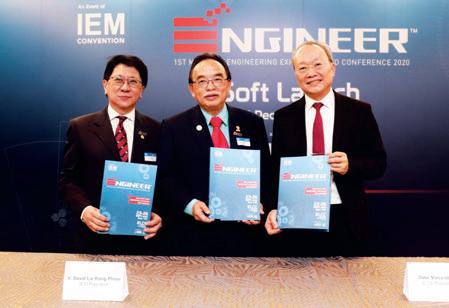
As mentioned earlier, I would like to have IEM produce and publish handbooks, codes of practices and guidelines to be used as reference materials by not only engineers but also others related to the engineering profession. These publications would also be another income stream to IEM. Many established engineering institutions worldwide have notable journals and publications which form a major portion of their income, thereby enabling them to be less dependent on members’ subscriptions for sustainability. I will endeavour to move IEM along this line but of course not forgetting our roots as a professional learned society that is inclusive and non-biased.
b. Conserving IEM’s funds
We are all aware that to ensure an organisation is financially sustainable, we not only need to be creative and diversified in our income streams but we also need to conserve our funds. At our current financial position, there is not a lot that we can do for members financially.
In fact, due to the MCO and COVID-19 pandemic affecting our activities, income generated by our events is only about 20% of our projected budget for 2020. As at May this year, annual subscription collected is only around 54%. In order to balance the income and the expenses, the Finance Committee has put in place a revised budget where we implement tight budgetary control on our expenses while maintaining our service to members as efficiently as we possibly can.
We ask for your indulgence in this difficult time while we strive to provide our services in other modes. As an example, Pos Malaysia had increased postage rates by nearly 100% since February this year. This would cause our postal expenses to send JURUTERA by post to members to double for this year. In an effort to mitigate this, we have created a
more user friendly e-JURUTERA which will enable members to read JURUTERA online without having to download the whole document. Members can nevertheless still opt to download the whole document for their record.
Although IEM will not be sending the printed hard copy of Jurutera to members by post, but these hard copies will be sent in bulk to the offices of IEM Branches and Headquarters. Members could drop by to collect these when they are around the vicinity or when they come to IEM to attend our activities. This will enable us to save more than RM400,000 this year. We ask for your kind understanding during this time while we endeavour to look into more efficient and better ways to deliver our services to you.
CONCLUSION
MY FELLOW ENGINEERS, Ladies and Gentlemen,
I look forward to the full support of the Council and the ExComm which are prepared to spend their time, effort and energy to participate in this crucial task of “Augmenting IEM”. Together, I believe we can go beyond our roles and transcend to a more robust professional institution with a multifaceted role in all aspects of Engineering as envisaged by the Founding Fathers of the Institution. I would also need the assistance of all IEM members to cooperate with us so as to make IEM brand, the “must-have” brand.
It is my ardent hope that together, we will make that happen. May our efforts towards this mission prevail.
Thank You.
Ir. Ong Ching Loon IEM President Session 2020/2021
Soft Launch of IEM Convention and ENGINEER Exhibition on 12 December 2019 at KLCC


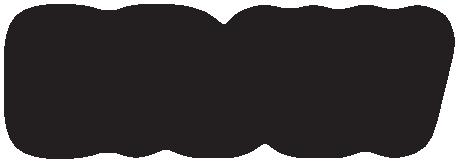
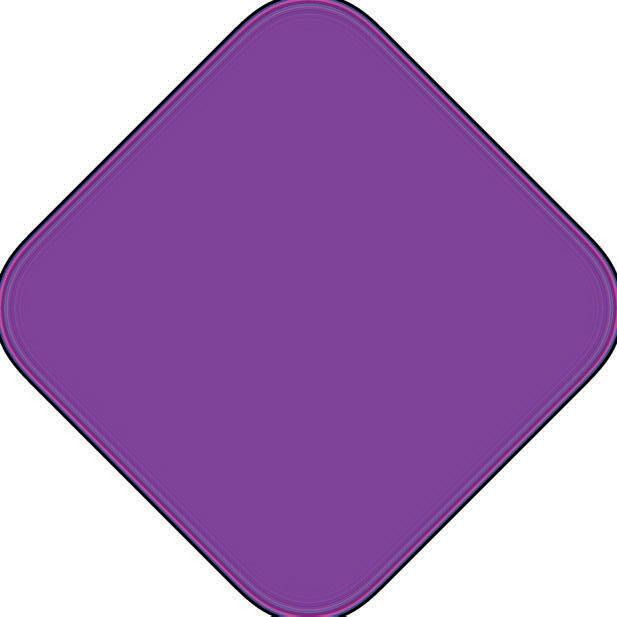


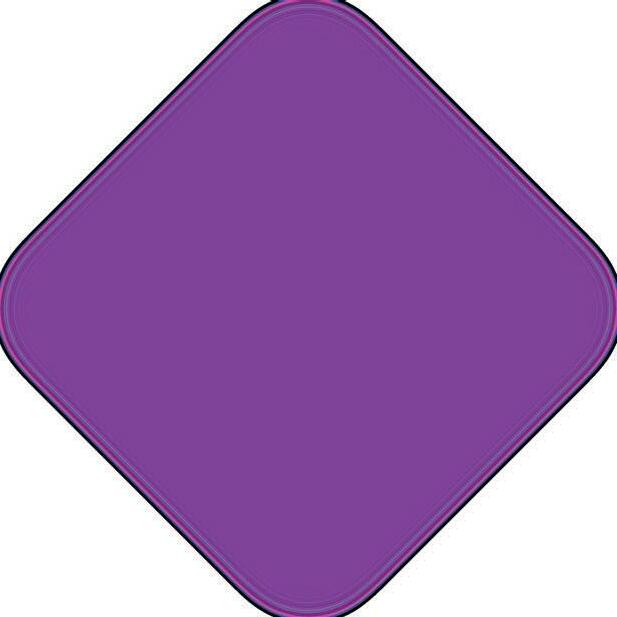

















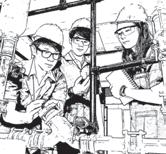





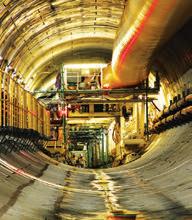

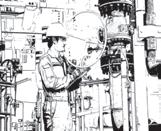





















THE MONTHLY BULLETIN OF THE INSTITUTION OF ENGINEERS, MALAYSIA
JURUTER A

Circulation and Readership Profile
Advertising Benefits






JURUTERA has an estimated readership of 200,000 professionals. Our esteemed readership consists of certified engineers, decision making corporate leaders, CEOs, government officials, project directors, entrepreneurs, project consultants, engineering consulting firms and companies involved with engineering products and services.


Our business partners can be assured that their products and services will be given the circulation and exposure they deserve, thus maintaining a sustained advertising presence to our core readers of decision-making engineers and technical experts. Our website offers an even wider market reach, with added international presence, aided by our international affiliation with official engineering bodies all over the world. Our online and offline advertising features such as banner advertising, article sponsorship and direct e-mail announcements have proven to be successful marketing strategies that will set the businesses of our partners apart from their competition.
ADVERTISING RATES








COVID-19 AND VENTILATION ENGINEERING

Since the Movement Control Order was introduced on March 18, social media apps have been abuzz with comments by netizens on the Covid-19 virus and its effects on humans. What an irony that such a microscopic creature is able to create such a huge pandemonium on human life. Humans are exposed to all kinds of bacteria and viruses although only certain types of these are harmful to our health.
Generally, most of us spend about 1/3 of our time daily in the office. Have we ever wondered whether the air in our offices is really clean? Are we free from infection if the air in the office is exposed to various chemicals and pathogens? Have we ever noticed a bad smell when we enter a hotel room? Have we ever noticed stain marks on wall i ?
Ventilation is defined as the process of supplying fresh air or discharging stale air from a space with the aim of controlling the level of pollution, humidity and temperature of the space.
According to the Occupational Safety & Health Act 1994, it is the responsibility of employers and building owners to provide safe workplaces for occupants in air-conditioned buildings. The Industry Code of Practice on Indoor Air Quality (IAQ) 2010ii, specifies exposure limits to chemical, biological contaminants and physical parameters such as temperature and humidity.
IMPORTANCE OF RELATIVE HUMIDITY
When the office air-conditioner is not operating properly, we will feel uncomfortable and irritated. We will also feel it if the air is too warm or too cold. An air-conditioner supplies not only cold air but also oxygen; it also filters out dust, dirt, odours and pathogens. The air should also have an appropriate relative humidity (RH) that is suitable for humans and yet, is able to control the reproduction of bacteria and fungus. The design of air-conditioners is based on Malaysian Standards 1525 where the specified
range of dry-bulb temperature is 23°26° Celsius and the RH is 55-70%.
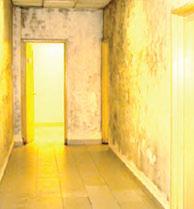
According to Dr Stephanie Taylor, a medical and architectural expert, “Ten years ago, we learnt that viruses studied as surrogates for Coronavirus, the family of SARS and Wuhan, were INACTIVATED on surfaces when the ambient relative humidity (RH) was 40-60%. Conversely, when RH was either below 40% or above 60%, the viruses remained virulent and infectious” iii
So one way to control the outbreak of infection is to control the humidity level! Proper control of air humidity is important to control the reproduction of micro-organism in the air.
Unfortunately, from my past audit experiences, there were many air-conditioned buildings where the performances of air-conditioners were found to be lacking. Quite often, black stains were seen in air funnels on the ceiling, an indication of fungus growth. A recent post-Covid development by the industry and ASHRAE was to petition WHO to produce an IAQ guideline on the minimum lower limit of RHiv
SUPPLY OF OXYGEN AND REMOVAL OF CO2
The Department of Occupational Safety & Health (DOSH) Malaysia sets the requirement for air-conditioned spaces of carbon dioxide (CO2) content as not exceeding 1,000
by Ir. Arul Hisham bin Abdul Rahim
Fungus growth on walls
Source: Lew Harriman
ppm (parts per million) and carbon monoxide (CO) as not exceeding 10 ppm. If fresh air is not brought in, the CO2 content will continue to rise through respiration while the oxygen concentration will slowly decrease. High CO2 concentration in humans will induce dizziness, drowsiness and a lack of concentration.
The split-unit air-conditioning system, which is very popular for use in homes and offices, works by recirculating air in a confined space. Imagine this recycled air in the waiting room of a clinic without proper ventilation. There could be various pathogens which can infect both visitors and health workers!
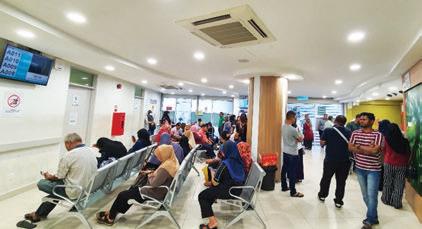
HOW CLEAN IS THE AIR WE BREATHE?
Foul odour is the result of a chemical reaction that occurs when there is fungus on moist surfaces. An air-conditioner which fails to adequately dehydrate the air stream (exceeding 65% relative humidity) will promote fungal and micro-organism reproduction. Black spots on the ceiling or walls are indicative of fungal colonies breeding. DOSH has set a total bacterial count of 500 cfu/m3 (coloni forming units per cubic metre) and a total fungal count at a maximum of 1000 cfu/m3 for office buildings.
Fungi need food to survive, food that comes from organic dust that sticks on to the surface or microscopic holes. Therefore, air must be well-filtered to ensure no dust passes through. The use of filters for air-conditioning systems depends on the use of space. For critical rooms, such as surgery or ICU, a HEPA (High Efficiency Particulate Air) filter is used. Split-unit air-conditioner filters will let in particles 33 times bigger than a HEPA filter will.
VENTILATION AIR MOVEMENT IN AIR-CONDITIONING SYSTEM
Recently, researchers from Guangdong, China, conducted a study on the transmission of Covid-19 through aerosol. They investigated the role of aerosol in the transmission of the Covid-19 virus in buildings and the effect of ventilation air movement within the environment v
The study confirmed that virus transmission happened not only through droplet transmission, but was also transmitted through aerosol. Air flow pattern and velocity of air stream also played an important role in the propagation of aerosol within a confined space.
The outdoor air ventilation rate is an important factor in controlling the room aerosol concentration. The average room concentration of aerosol is a function of ventilation rate and source strength. When the ventilation rate is low, the concentration of aerosol from exhaled air becomes highly concentrated.

Split-unit air-conditioner
Source: AHAR Consultants PLT
FEATURE
In the study above, the average air flow was found to be much less than that prescribed in ASHRAE’s Standard 62.1, which resulted in a high infection risk for inhabitants. Another factor is occupancy density which also contributed to the infection rate.
LESSONS FROM COVID-19 PANDEMIC
The world has put much of its research funds into finding a vaccine. Though vital, this should be accompanied by research on how to improve non-drug interventions which are the only things that work so far. Other non-drug options, such as the built environment, ultra-violet irradiation, ventilation, air circulation and surface material should also be studied in greater detail.
Air-conditioning & ventilation is a complex and important science for the sustainability of life and it should not be taken for granted. Do check the air-conditioners in your office for any sign of negligence because there is a possibility that someday, another virus strain may emerge to cause another pandemic.
For professionals in the real estate industry, the performance of air-conditioning & ventilation systems depends on the cooperation between developers, ACMV engineers and contractors. The ventilation system will only work properly if it is well designed and the building
envelope is well built. For proper moisture control and cleanliness, buildings need to be air-tight to prevent uncontrolled air intrusion and dust from the outside.
Indoor air flow must also be understood. The use of computational fluids dynamics simulations can ensure that the airflow works as desired. Society should reevaluate the importance of ventilation engineering in the context of our health well-being.
REFERENCES
i Diagnosing and fixing humidity control problems in real-world buildings; Lew Harriman, 2013
ii DEPARTMENT OF OCCUPATIONAL SAFETY AND HEALTH, MINISTRY OF HUMAN RESOURCES, MALAYSIA, JKKP DP(S) 127/379/4-39
iii https://www.hpac.com/industry-perspectives/article/21125154/editorsnotes-iaq-ieq-public-health-humidity-controls
iv https://40to60rh.com/
v Evidence for probable aerosol transmission of SARS-CoV-2 in a poorly ventilated restaurant; https://www.medrxiv.org/content/10.1101/2020.04. 16.20067728v1
Author’s Biodata
A registered electrical energy manager and GBI commissioning specialist, Ir. Arul Hisham of Ahar Consultants PLT, specialises in thermal storage system design, air-conditioning systems and energy efficiency.
Embarking on a Journey for Scopus-Indexed


WHEN NEW ACADEMIC TEACHING STYLE IS THE NORM

by Ir. Prof. Dr Jeffrey Chiang
ADAPTING TO A NEW CONDITION
The nation and the world as we knew it before mid-March 2020, was caught in a turmoil and faced a pandemic crisis due to the widespread infection of Covid-19 virus in humans. Life took a very drastic turn when the Government first announced the Movement Control Order (MCO) from 18-30 March 2020. The MCO duration had since been extended four times.
To mitigate the risk of Covid-19 virus infections, academics, including lecturers, university administrators and students were stopped from entering university premises. Classes, experimental laboratory works and other academic research pursuits came to a halt, with the MCO restrictions imposed on all those working, teaching and studying in universities.
On hindsight, even before the MCO was announced, the SEGi University management did have the foresight to explore the possibility of online teaching in case there was a national lockdown. All its lecturers were required to attend a training session on the use of the Panopto Online virtual platform on 17 March 2020, a lastminute arrangement. Unfortunately my laptop computer malfunctioned and I could not attend the training session.
When classes were held online during the MCO, many lecturers, including myself, chose to use the Zoom meeting platform instead, as it was more user-friendly and free via internet access.
It was truly an eye-opening experience for academics like myself who had not envisaged the need to use online teaching tools. Indeed, the prospect of mastering distance learning techniques was an alien thought for most of us. I guess even the students themselves were bewildered at having to sit at home to learn, instead of attending physical classes in campus.
Anyway, universities around the world were switching to online classes from March 2020. It is most likely that this will be the mode of operation for all universities till the end of the year, if the pandemic is not resolved any time soon.
LIFE AS A VIRTUAL LECTURER
How has it been to be a virtual lecturer since March 2020? I have been homebound since the start of the MCO, except for two occasions when Conditional MCO was announced from 4 May 2020 and I had to go to the campus office to settle some students’ assignments and other necessary paperwork.
On a regular basis, I arranged for Zoom meetings with my students on Thursday afternoons to teach classes (on Structure 1) for architectural students. On Wednesdays, I had other Zoom meetings for consultation purposes for Final Year Project civil engineering students, followed by consultation with Integrated Design Project students.
So, this novice in the use of the Zoom meeting platform for online classes is now quite well versed in the process; it’s just all part of a normal day now to have face-to-face onscreen time with my students. This unconventional situation has now become the norm in teaching and we are having to learn fast through regular dialogue with or learning from other faculty staff via email and WhatsApp communication. Our faculty members are a co-operative bunch of people who are keen and enthusiastic about learning new things… and this attitude spills over to the students too.
Figures 1 and 2 show my usage of whiteboard tools in Zoom meetings with students, where computerised sketches were done for better illustrations to students in online classes.

For enquiry please contact: CRIB TECHNOLOGIES SDN BHD (564096-A), ARE WALL (M) SDN BHD (542608-W)
No. 28-2, Jalan Setia Utama AS U13/AS, Setia Alam, Sek U13, 40170 Shah Alam, Selangor
Tel: +603-3359 1227 (Hunting Line)
Fax: +603-3358 7392
Email: groadesb@yahoo.com
Website: http://www.ctsbare.com
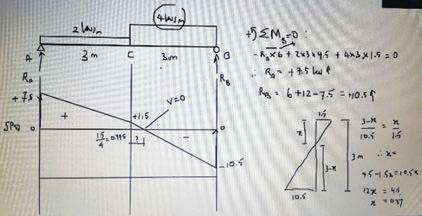

Besides learning to share Powerpoint presentation slides in online classes, lecturers can also record the online class session on the Zoom platform. The videos can then be uploaded to the university’s Blackboard Learning Management System (BB LMS) and students allowed to view and download the recorded videos after the class ends. The use of Blackboard as a teaching tool is also required by lecturers so as to allow students access to all teaching materials to be uploaded at the beginning of the semester. All coursework and assessments are also done online using the Blackboard tools.
The students had their final examinations on 12-22 May 2020, conducted online via the BB LMS. The final papers were set and uploaded to be made available to students on a particular date and time. Students were given a pre-determined time duration of about 4 hours to complete the paper, scan and submit by uploading to the Blackboard. I finished the examination for my students on 15 May 2020 and I downloaded their papers and marked them accordingly.
Overall, it has been an exhilarating experience to learn new things and to adapt to new situations; we pray that life will be peaceful ahead and healthy for everyone, even though we may not go back to the way we were before.
Author’s Biodata
Ir. Prof. Dr Jeffrey Chiang , is Professor of Civil Engineering at SEGi University and a past Vice-President of IEM.
Figure 1: Sketching SFD and BMD in beams
Figure 2: Analysis in truss structures

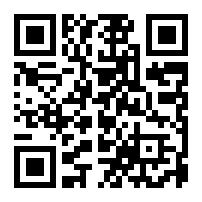






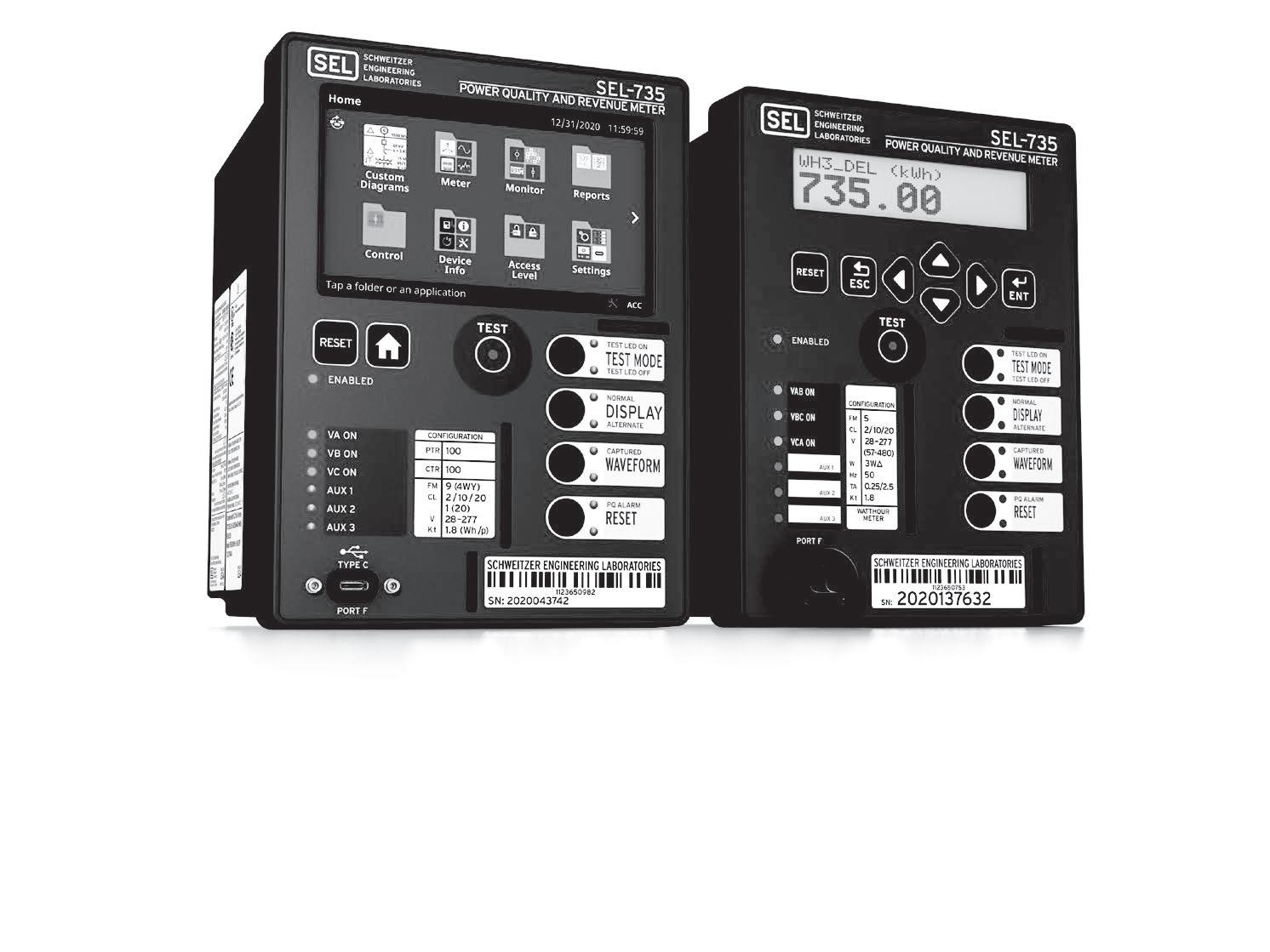


HANGING HIGH ON THE WALL

ENGINEER'S LENS
Dr Habibah @ Norehan Haron
DR HABIBAH, a committee member of Women Engineers Section, IEM, is a senior lecturer at Engineering Department, Razak Faculty of Technology and Informatics, Universiti Teknologi Malaysia.
The World Peace Pagoda, situated on a narrow ridge high above Phewa Lake in Pokhara, measures 105m in diameter. It is a major tourist attraction in Nepal and offers a panoramic view of the Himalayan peaks. The pagoda has 4 statues of Lord Buddha around the wall, gifts from Japan, Sri Lanka, China and Lumbini Nepal.
Men at work were spotted hanging on the brilliant-white 35m-tall wall of the pagoda, which stood at 1,100m above sea level. Principles of engineering mechanics, static, safety and ergonomics are important aspects for those men, hanging high on the wall.

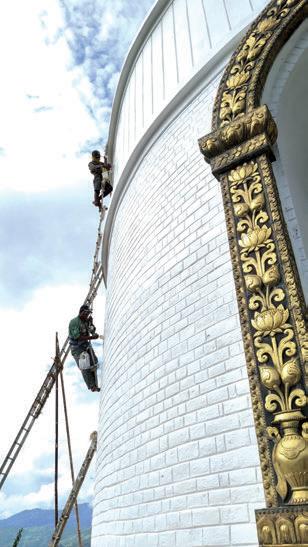
CHALLENGES IN GETTING STARTED AGAIN

by Mr. Wei Kewu
On 18 March 2020, the Movement Control Order (MCO) was enforced nationwide to contain the spread of Covid-19. At 12 May, the MCO had been extended four times to end on 9 June.
Because of this, work at construction sites came to a stop for about 2 months. The MCO was a very difficult period. As a main contractor, we had to ensure that essential activities such as security, housekeeping and vector control was observed at sites. We also had to ensure that payments to suppliers, subcontractors and our employees were made on time. This situation reminded us of the saying: “Cash flow is the king.”
On reflection, we faced four main challenges when we were preparing to resume site works: When the MCO would end, the higher costs incurred if new Covid-19 cases were detected, the ability of suppliers and subcontractors to resume work and new instructions, if any from the Government.
Expected end of MCO: During the early days of the MCO, we were preparing for when work would resume as the first phase was from 18 March to 1 April 2020 but on 25 March, the Government announced that it would be extended to 14 April. At that point, we changed our plan and worked from home.
On 10 April 2020, there was good news. Nine industries were allowed to resume operations, subjected to stringent conditions imposed by MITI. These included allowing only 50% of employees at any one time and compliance with

certain Standard Operation Procedures (SOP). We were also reminded that if any worker was detected as Covid-19 positive, we, the employers, would have to bear the full cost of the medical bill.
Higher costs incurred if new Covid-19 cases were detected: We calculated the benefits against the cost since we had a few hundred migrant workers on the payroll. As the daily loss worked out to be much higher than the potential medical cost, we chose to commence work. On 13 April, MITI activated the application process and, together with thousands of other applicants from the nine permissible industries, we made our applications online. We obtained approval only after 10 days but in the meantime, we made detailed plans that covered the following:
1. Team A and Team B arrangements as well as alternating working hours
2. Pandemic control measures
3. Supervision arrangement
4. Emergency response
5. Emergency support.
We took steps to mark social distancing on site and commissioned specialists to disinfect the site and office.


Disinfection in Progress
Ability
of suppliers and subcontractors to resume work: We arranged for our suppliers and subcontractors to apply for their permits and waited a week for approval. However, a new situation arose which changed our plans. On 1 May 2020, the government announced that most industries could resume work from 4 May without the need to get an approval from MITI. Thus, all our efforts to apply for the resumption of works since 13 April appeared to be redundant.

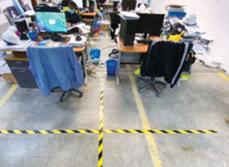
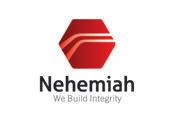

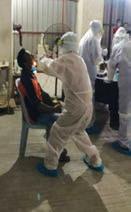

New instructions from the Government: It was a difficult decision for the Government to allow businesses to operate during the MCO. As we were preparing to start work on 4 May, the government announced that all foreign workers would have to undergo Covid-19 tests and that costs would be paid by the employers. Each test costs RM400 and we had 800 workers. But we immediately arranged for this to be done at an approved clinic and on 12 May, all our workers had completed the tests with negative results. It was only then that our sites started to hum again with activity. Tower cranes were activated and trucks rolled in to deliver concrete. The real challenge, however, was catching up on time lost due to the MCO. At the same time, we learnt to embrace the new norm as Covid-19 was expected to be around for a bit longer.

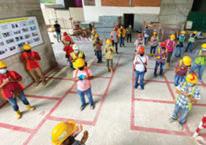
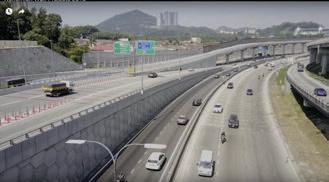

Social Distancing inside the site office
Observing social distancing in buses
Observing social distancing at the workplace
Covid-19 testing in progress
IMPORTANCE OF DIGITALISATION DURING COVID-19


by Mr. Alex Looi Tink Huey Ir. Dr Siow Chun Lim
Last New Year’s Eve was unlike any other we had ever experienced. Table 1 shows the calendar of events since then.
31 December 2019 China reported a pneumonia case of unknown cause to WHO
25 January 2020 Malaysia reported its first case
30 January 2020 WHO declared a Public Health Emergency of International Concern
11 February 2020 WHO named the new coronavirus disease as COVID-19
11 March 2020 WHO declared COVID-19 as a pandemic
18 March 2020 Malaysian government initiated the Movement Control Order
Table 1: Calendar of events from New Year’s Eve to Malaysia’s Movement Control Order1-2
The COVID-19 pandemic has horizontally and vertically impacted the global supply chain markets. Airlines, construction, motor vehicles, real estate, travel agencies and retail outlets are among those forced to bear the full brunt of this global crisis. Businesses struggle to meet monthly expenses and make ends meet, particularly SMEs and those in the gig economy.
The Malaysian Investment Development Authority (MIDA) has estimated that industrial output will reduce between 40% and 70% during the MCO, with a projected negative growth of -8.6% of the manufacturing sector3. The value of Gross Domestic Product (GDP) loss relative to that projected for 2020, is estimated to be in the range of RM38 billion to RM102 billion3
The announcement of the MCO on 16 March 2020 caught many companies by surprise. With only a day’s notice before the MCO kicked in on 18 March, they
scrambled to prepare and implement remote working arrangements. Expecting limited-to-zero cash flow during this period, they had to abandon conventional business processes and instead, adopt new strategies to stay afloat.
One recent survey revealed that 40% of the respondents were not prepared for remote working arrangements4. Companies which did not have digital business processes and digital sales channels would most likely be more affected during the MCO. All these are leading indicators of the importance of digitalisation. Companies should leverage on the power of digitalisation in executing their Business Continuity Plans. Firstly, accounts and human resource expertise should be leveraged to maintain the physical and mental wellbeing of employees and to provide guidance, assurance and relief to those affected5. Online banking accounts should be set up to facilitate the transfer of funds in lieu of depositing traditional cheques. PwC highlighted that future digital banks can empower consumers with big data analytics tools and platforms which are supported by machine learning algorithms to assess financial status and information6
Next, back-up plans for affected employees may be developed by incorporating digital automation and remote working arrangements5. Employees should be equipped with collaborative tools with reliable broadband connections. Interactions and meetings with internal teams and customers can be conducted via conference bridges or virtual meeting facilities.
Cloud-based accounting systems can be used to manage cash flow and working capital, real-time inventory data and forecasts alongside supply and demand predictions. KPMG noted that businesses with data-rich environments can achieve better operational performances by harnessing the capabilities in operations, procurements and Research & Development (R&D)5
Companies can also explore the e-commerce platform to ensure internal supply chains and delivery
mechanisms are able to cope with the demand and to satisfy customer requirements with comprehensive end-to-end supply chain management and advanced forecasting abilities using data analytics7.
Businesses with full supply-chain transparency with algorithms to detect purchase-pattern changes will be able to mitigate stock-outs during the crisis8
The shift to remote working arrangements at both scale and pace will be likely increase cybersecurity threats as existing processes and good practices may be sidestepped when employees utilise virtual meetings and data sharing tools9. Remote access systems may also be targeted by Distributed Denial of Service (DDOS) attacks seeking to disrupt business operations or to extort a business for money. To mitigate cybersecurity threats, businesses should ensure that remote access systems are securely configured and installed with the latest security patches, monitor web traffic logs (such as file sharing, collaboration tools and virtual meetings) to detect data theft and develop cybersecurity risk management plans. The culture of cybersecurity should also be cultivated among employees.
According to McKinsey, the COVID-19 crisis has significantly accelerated the shift to digitalisation where consumers and businesses have accelerated the use of digital technologies10 The adoption of digitalisation is more about human psychology rather than the technology itself and the ways in which humans interact and use these technologies.
Therefore, businesses must adopt a people-centric approach to their digital transformation efforts for successful implementation. COVID-19 is expected to stay for some time and digitalisation is the key enabler of the new norm that we all have to embrace
REFERENCES


[1] World Health Organization, Rolling Updates on Coronavirus Disease (COVID-19), WHO, May 11, 2020. [Online]. Available: https://www.who.int/emergencies/diseases/novelcoronavirus-2019/events-as-they-happen
[2] A. Raghu, Malaysia Reports First Confirmed Cases of Novel Coronavirus, Bloomberg, January 25, 2020. [Online]. Available: https://www.bloomberg.com/news/ articles/2020-01-25/malaysia-reports-first-confirmed-cases-of-novel-coronavirus
[3] Malaysian Investment Development Authority, Impact of COVID-19 on the Malaysian Economy and Mitigation Measures, MIDA, 2020. [Online]. Available: https://www. mida.gov.my/home/impact-of-covid-19-on-the-malaysian-economy-and-the-mitigationmeasures/posts/?lg=EN
[4] P. Kanagaraj, Remote Working: Are Malaysian Companies Well-Equipped for it?, Business Today, April 27, 2020. [Online]. Available: https://www.businesstoday.com.my/2020/04/27/ remote-working-are-malaysian-companies-well-equipped-for-it/
[5] KPMG, Immediate Actions: What is Needed to Assess Organizational Exposure to COVID-19?, KPMG, 2020. [Online]. Available: https://home.kpmg/xx/en/home/ insights/2020/03/immediate-actions.html
[6] K.H. Lum, COVID-19: Opportunities and Challenges for Digital Banks, PWC, April, 2020. [Online]. Available: https://www.pwc.com/my/en/perspective/digital/200408-pwc-blogcovid-19-opportunities-challenges-digital-banks.html
[7] KPMG, Medium-to-Long-Term Actions: Looking Ahead to Become More Resilient in the Future, KPMG, 2020. [Online]. Available: https://home.kpmg/xx/en/home/insights/2020/03/ medium-to-long-term-actions.html
[8] S. Blackburn, L. Laberge, C. O’Toole, and J. Schneider, Digital Strategy in a Time of Crisis, Mckinsey, April 22, 2020. [Online]. Available: https://www.mckinsey.com/businessfunctions/mckinsey-digital/our-insights/digital-strategy-in-a-time-of-crisis
[9] PWC, Managing the Impact of COVID-19 on Cyber Security, PWC, April 2020. [Online]. Available: https://www.pwc.com/my/en/assets/publications/2020/pwc-malaysia-impact-ofcovid-19-on-cyber-security.pdf
[10] N. Leung, J. Ngai, J. Seong, and J. Woetzel, Fast-Forward China: How COVID-19 is Accelerating Five Key Trends Shaping the Chinese Economy, McKinsey, May 6, 2020. [Online]. Available: https://www.mckinsey.com/featured-insights/asia-pacific/fast-forwardchina-how-covid-19-is-accelerating-five-key-trends-shaping-the-chinese-economy


VISIT TO MIYATA PLANT, TOYOTA
MOTOR KYUSHU, JAPAN

by Illy Alia binti Mohd Azizan
On 24 January 2020, 10 students from UiTM IEM Student Chapter attended the Nanosatellite Mission Design Review 2.0 at Miyata Plant, Toyota Motor Kyushu, Inc., Japan. The Miyata was established on February 8 1991 and focused on the production and sales of cars and car parts. The plant manufactures the Lexus brand which builds quality products with fine expertise. The cars built here are customised to customers’ requests, so no two are alike.
Production flow starts with metal stamping to make the doors, fenders and other parts of the car, followed by quality inspection. Next, during the welding process, robots are used to create a high precision rigid body for a smooth and quiet ride. The welded body is then washed followed with pre-, intermediate- and top-coat painting. Both interior and exterior are then polished to mirror finish.
At the parts assembly facility, about 2,000 employees put together as many as 6,500 parts, including windows and engine. The final step after the assembly is the inspection of about 1,800 check-points on every car including the exterior, functions, gaps and alignments on hood and doors, surface height difference, bumps, dents and any extraneous objects. This ensures only high-quality vehicles are delivered which will leave customers totally satisfied.
At the quality zone, we were briefed on the production
and workmanship of the skilled team members. For the interior of the car, they self-apply the luxurious instrument panel. Although the leather seats are installed by the robots, the stitching is done by the 12 extraordinary “Takumi” specialists with care. To qualify for this job, these specialists must demonstrate their ability by folding an origami-paper cat in under 90 seconds with one hand. It takes a long time to ace this skill to a proper degree of refinement.
As for the exterior of the car, we were shown how the parts were installed with optimal gaps, avoiding misalignments of outer panels. When it comes to the doors, they aim for a high-class closing sound.
The Toyota guidelines define the framework of basic values and business methods where employees at every level applies the “Toyota Way” principle at work, globally.
The Toyota Way is built with two pillars which are continuous improvements that take in the concept of Challenges, Kaizen and Genki Genbutsu as well as embrace Respect and Teamwork. The principles are updated constantly for self-improvement in order to make the highest quality products. They also emphasise human resource development by training the employees to build the perfect Lexus.
The UiTM students were amazed at Toyota’s production line.

Visit to the Toyota Motor Kyushu Factory
UPCOMING ACTIVITIES
WEBINAR - Sustainability Professional: In the Throes of Unprecedented Crisis
Date : 3 September 2020 (Thursday)
Time : 2.30 p.m. – 3.30 p.m.
Venue : Digital Platform
Approved CPD : 1
Speaker : Ts. Sr. Nadzirah Hj. Zainordin
Technical Visit to KTMB Track Engineering Depot Shah Alam - Rescheduled from 21 March 2020 (Keretapi Tanah Melayu Berhad, Depoh Kejuruteraan Landasan, Lot 95, Jalan Beliung 15/11, Seksyen 15, 40200 Shah Alam, Selangor Darul Ehsan.)
Date : 5 September 2020 (Saturday)
Time : 9.00 a.m. – 1.00 p.m.
Approved CPD : 3.5
Organised By : Public Sector Engineers Special Interest Group
WEBINAR - “MS IEC 62305 SERIES SESSIONS 1 & 2”
Date : 7 - 8 September 2020 (Monday to Tuesday)
Time : 2.00 p.m. – 4.00 p.m.
Venue : Digital Platform
Approved CPD : 2
Speaker : Mr. Shailendra Kumar


One-Day Course On “Offshore Platform and Facilities for Exploration And Production Including Structural Health Monitoring For Asset Life Monitoring” - Rescheduled from 30 April 2020
Date : 9 September 2020 (Wednesday)
Time : 8.30 a.m. – 5.30 p.m.
Venue : Wisma IEM, 04- Auditorium Malakoff, Ground Floor
Approved CPD : 7
Speakers : Ir. Prof. Dr Mohd Shahir Liew, Ir. Dr Lim Eu Shawn
WEBINAR - An Overview + Application of Occupational Safety and Health In Construction Industry Management (OSHCIM) Session 1 (of 2-Part Training Programme)
Date : 12 September 2020 (Saturday)
Time : 1.30 p.m. – 3.30 p.m.
Venue : Digital Platform
Approved CPD : 2
Speakers : YBrs. En. Nazruddin bin Mat Ali, En. Azman bin Hussain, Ir. Dr Mohd Fairuz bin Ab Rahman, Ir. Mokhtar bin Sabtu, En. Mohamad Syamir bin Senin
WEBINAR - An Overview + Application of Occupational Safety and Health In Construction Industry Management (OSHCIM) Session 1 (of 2-Part Training Programme)
Date : 12 September 2020 (Saturday)
Time : 3.45 p.m. – 5.45 p.m.
Venue : Digital Platform
Approved CPD : 2
Speakers : YBrs. En. Nazruddin bin Mat Ali, En. Azman bin Hussain, Ir. Dr Mohd Fairuz bin Ab Rahman, Ir. Mokhtar bin Sabtu, En. Mohamad Syamir bin Senin






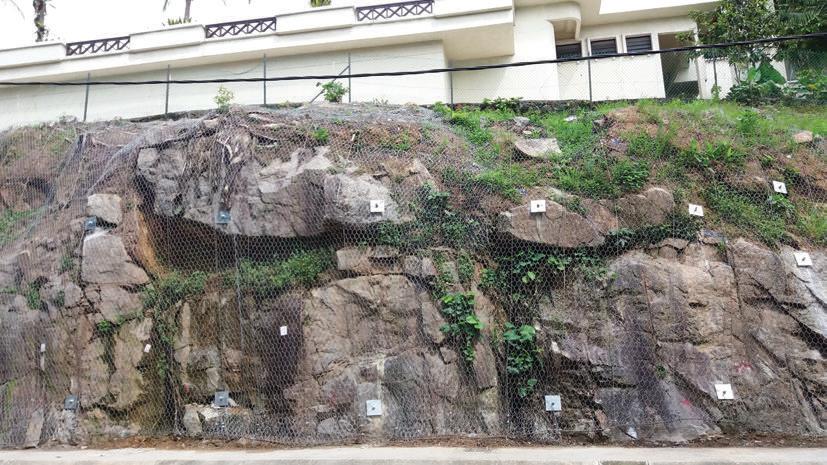
Maccaferri offers a wide range of certified Rockfall Protection Systems to mitigate against rockfall risks posed to infrastructures, mine works, properties and human lives.
With our understanding of natural hazards that clients are facing today, Maccaferri can provide the most appropriate solution with the use of our bespoke software in the design process to stabilise rock faces and soil slopes.
Our system solutions include Debris Flow Barriers, Dynamic Rockfall Barriers, Simple Drapery System, and Surface Strengthening.




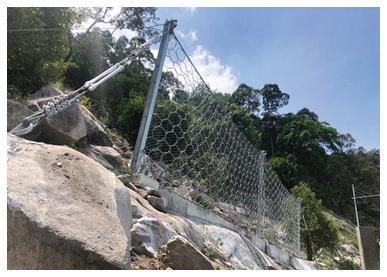



WE SABAH HELPS IN FIGHT AGAINST COVID-19

by Nor Shakinah Awang Raiman

On 11 March 2020, the World Health Organisation (WHO) declared the novel coronavirus (Covid-19) outbreak a global pandemic due to the rapid increase in the number of cases outside China. Countries raced to slow down the infection by conducting testing and treating patients, carrying out contact tracing, limiting travel, placing citizens under quarantine and cancelling large gatherings such as schools, weddings and religious gatherings.
Several countries have succeeded in slowing the outbreak. However, the situation remains unpredictable. On top of that, the latest Global Financial Stability Report shows that the financial system is already feeling a dramatic impact. Every day, around the world, people lose their jobs and incomes and there is no way of knowing when normality will return.
Nevertheless, our healthcare workers continue to devote their time and energy to try and contain the pandemic. We are humbled by their immense sacrifices, invaluable dedication, commitment and unwavering efforts in managing Covid-19, oftentimes at the risk of their own lives, for the benefit of the nation.
To do our part, The Institution of Engineers Malaysia (IEM) Sabah, Women Engineer (WE) Section organised a donation drive to support those affected. WE collected donations totalling RM3,950 over 2 days and the money was channelled to the following:
1. Lunch, dinner and supper meals which were distributed to staff members of Kementerian Kesihatan Malaysia (KKM), Polis Diraja Malaysia (PDRM) and Angkatan Tentera Malaysia (ATM) in Kota Kinabalu, Beaufort and Kota Belud districts.
2. Supplies for Hospital Queen Elizabeth.
3. Food donation to University Malaysia Sabah (UMS) students.
4. Donation of 1 unit non-contact thermometer for Hospital Beaufort.
This is not just a public health crisis; this is a crisis that has touched every sector. For this reason, we must all do our part, no matter how small or even to a limited extent. Practise physical distancing, thoroughly clean your hands regularly and avoid mass gatherings or crowded places. We should be in this together to fight the COVID-19 pandemic.
#STAYATHOME #STAYSAFE

Donation of food for students of Universiti Malaysia Sabah
Donation of food for students of Universiti Malaysia Sabah
UPCOMING ACTIVITIES
Webinar - Introduction to Wells Decommissioning
Date : 12 September 2020 (Saturday)
Time : 9.00 a.m. – 11.00 a.m.
Venue : Digital Platform Approved CPD : 2
Speaker : Ir. Razak Yakob
2-Day Course on Malaysian Civil Engineering Standard Method of Measurement (MyCESMM2)
Date : 14 - 15 September 2020 (Monday to Tuesday)
Time : 9.00 a.m. – 5.00 p.m.
Venue : Wisma IEM, 02- C&S Lecture Room, Second Floor, 03- TUS Lecture Room, Second Floor
Approved CPD : 13
Speaker : Ir. Hj. Shahul Ikram bin Hj. Adnan
WEBINAR - 1. Introduction of Kenaf Fibre in Expanded Polystyrene Concrete* 2. The Hidden Threat Behind EI NINO
Date : 17 September 2020 (Thursday)
Time : 2.30 p.m. – 3.30 p.m.
Venue : Digital Platform
Approved CPD : 1
Speakers : Dr Ling Lloyd, Ir. Dr Kwong Kok Zee
Pre-AGM Talk On “Air Pollution Episode In Pasir Gudang: What Can We Learn?”
Date : 19 September 2020 (Saturday)
Time : 9.00 a.m. – 11.00 a.m.
Venue : Wisma IEM, 04- Auditorium Malakoff, Ground Floor
Approved CPD : 2
Speaker : Dr Mohd Famey bin Yusoff
One Day Course On “Hazard Identification, Risk Assessment and Control (HIRAC) in Engineering Project Management”
Date : 22 September 2020 (Tuesday)
Time : 9.00 a.m. – 5.00 p.m.
Venue : Wisma IEM, 04- Auditorium Malakoff, Ground Floor
Approved CPD : 7
Speaker : Dr Abdul Rahman bin Abdul Rahim
One-Day Course On “Introduction to Offshore Decommissioning For Fixed Offshore Structures” – Rescheduled from 18 May 2020
Date : 23 September 2020 (Wednesday)
Time : 8.30 a.m. – 5.30 p.m.
Venue : Wisma IEM, 04- Auditorium Malakoff, Ground Floor
Approved CPD : 7
Speakers : Assoc. Prof. Dr Noor Amila, Professor Shahir, Ir. Dr Lim Eu Shawn


Nehemiah Prestress



Nehemiah-OVM provides the following products and services:
- Post-tensioning solution provider
- Carpark Flat Slab
- Transfer Plate
- Beams, Box Girders
- Alternative design solutions
- Cable systems (stay cable, main cable, hanger)
- Bridge bearing and expansion joint
- Construction solutions (heavy lifting, ILM, etc)
- Monitoring, repairing and strengthening for structures





Head Office
Nehemiah Prestress Sdn Bhd 1140945-A
No. 45-3, Jalan PJU 5/20
The Strand, Kota Damansara 47810 Petaling Jaya
Selangor Darul Ehsan
Malaysia
Tel: (603) 6142 6638
Fax: (603) 6142 6693
Email: enquiry@nehemiahpt.com
Certified by the European Organization for Technical Approval










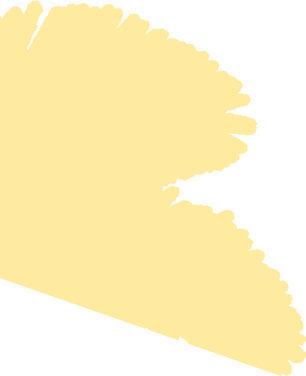
MY SON SANCTUARY

Last year October, I joined my buddies to visit My Son, the ancient shrine of Champa Kingdom, located about 70km southwest of Danang, a coastal city of Central Vietnam. At Danang we hired a local tour guide named John and headed to My Son by van. It was raining but fortunately it stopped when we reached our destination.
My Son means beautiful mountain in Vietnamese and is situated at a valley surrounded by two mountains ranges at Quang Nam Province. It is a cluster of Hindu temples built between the 4 ~ 13th century by the Kings of Champa, an Indianised kingdom of the Cham people. According to John, the first temple was built by King Bhadravarman who reigned from the year 380 ~ 413. Whenever a new king ascends the throne, he is obliged to build a temple to dedicate to the God Shiva as his protector. Over the centuries, more than 70 temples have been constructed within the valley, thus making My Son the largest and oldest ancient holy sanctuary in the South East Asia, beating Angkor Wat of Cambodia and Borobudur of Indonesia.
In 1832, Minh Mang, the Emperor of Vietnam conquered My Son. It was left abandoned and later covered by jungle until 1885, when a Frenchman MC Paris rediscovered it. During the
Vietnam War, communist Viet Cong seek shelter at My Son and in August 1969 the United States launched carpet bombing using B52 bombers.

As the result, many temples were destroyed. After the war, Vietnamese Government started the conservation work and in 1999 My Son was gazetted by UNESCO as a World Heritage Site of the ancient Champa Civilisation.
As I explored the site, I realised that the temples were built in moderate size. All the temples were made entirely from reddish bricks or stones, beginning from the bottom foundation till the top roof. The bricks were carefully



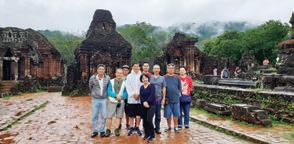
layered and bonded by some kind of sticky mortar. As explained by John, the structures were hardened by fire after the temple was completely constructed. This technique made the temples solid and they prevailed till today. I also noticed some inscriptions on the walls which according to John were sacred phrases in ancient Sanskrit or old Cham. There were varieties of decorative and deity carvings cut into the bricks.
As I explored further, I noticed there were few artefacts at the site which was quite unusual for an ancient temple. I asked John and he replied that most of the artefacts were collected by archaeologists who came to do research. Some artefacts were transported to museums. Some were stolen and sold to antique collectors.
As I explored the site, I could see traces of wars such as bullet marks on walls or towers and half ruined structures. Even the surroundings were covered with bomb craters turned ponds. The long history spanning for almost 9 centuries of the Champa civilisation was reduced together with the destructions brought by bloody wars. It becomes the living proof that the greatest enemy of mankind is man. Man creates, man destroys. However it is heartening to see conservation works to restore the ruined temples. Those who appreciate ancient history will find My Son a worthwhile place to visit. I am definitely one of them.
My Son Sanctuary
My buddies and families
Bomb crater turned pond
Cluster of ruined temples and structures
Ir. Dr Oh Seong Por is the chairman of IEM Negeri Sembilan Branch.
Ir. Dr Oh Seong Por







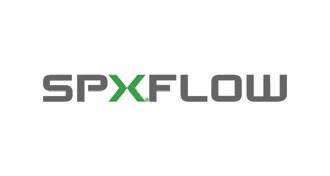
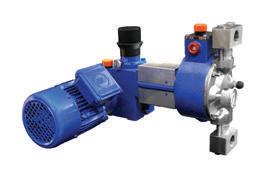

Kepada Semua Ahli,
TEMUDUGA PROFESSIONAL
Tarikh: 13 Ogos 2020
SENARAI CALON-CALON YANG LAYAK MENDUDUKI TEMUDUGA PROFESIONAL TAHUN
2020
Berikut adalah senarai calon yang layak untuk menduduki Temuduga Profesional bagi tahun 2020.
Mengikut Undang-Undang Kecil IEM, Seksyen 3.8, nama-nama seperti tersenarai berikut diterbitkan sebagai calon-calon yang layak untuk menjadi Ahli Institusi, dengan syarat bahawa mereka lulus Temuduga Profesional tahun 2020.
Sekiranya terdapat Ahli Korporat yang mempunyai bantahan terhadap mana-mana calon yang didapati tidak sesuai untuk menduduki Temuduga Profesional, surat bantahan boleh dikemukakan kepada Setiausaha Kehormat, IEM. Surat bantahan hendaklah dikemukakan sebulan dari tarikh penerbitan dikeluarkan.
Ir. Dr David Chuah Joon Huang Setiausaha Kehormat, IEM (Sessi 2020/2021)
PERMOHONAN BARU
Nama Kelayakan
KEJURUTERAAN AWAM
ADILAH BINTI MOHD ZAWAWI BE HONS (UTP) (CIVIL, 2010)
KEJURUTERAAN ELEKTRIKAL
ALI AKBAR BIN AHMAD JASMI BE HONS (UNITEN) (ELECTRICAL POWER, 2007)
MOHD ROSLI BIN AWANG BE HONS (UTHM) (ELECTRICAL - ROBOTIC & AUTOMATION SYSTEM, 2007)
TEO TECK CHEONG BE HONS (UTAR) ( ELECTRICAL & ELECTRONICS, 2013)
PERMOHONAN BARU / PERPINDAHAN MENJADI AHLI KORPORAT
Nama Kelayakan
KEJURUTERAAN AWAM
NOOR NABILAH BINTI SARBINI BE HONS (UTM) (CIVIL, 2008) ME (UTM) (CIVIL-STRUCTURE, 2010) PhD (UTM) (CIVIL, 2014)
KEJURUTERAAN ELEKTRONIK
SAFRI BIN CHE KUB BE HONS (PORTSMOUTH) (ELECTRONIC & ELECTRICAL, 1997)
KEJURUTERAAN MEKANIKAL
CHE HASSAN BIN CHE MAHMOOD BE HONS (USM) (MECHANICAL, 2002)
PERPINDAHAN AHLI
No. Ahli Nama Kelayakan
KEJURUTERAAN AWAM
94021 AMNORZAHIRA BINTI AMIR BE HONS (MALAYA) (CIVIL, 2003) MSc (UPM) (ENVIRONMENTAL, 2007) PhD (KAIST) (CIVIL & ENVIRONMENTAL, 2012)
105663 LEONG KAH HON BE HONS (UTHM) (CIVIL, 2009) PhD (MALAYA) (2015)
35919 LEOW ANN HONG BE HONS (UTM) (CIVIL, 2010)
108400 MASLINDA BT MOHIDDIN BE HONS (MALAYA) (CIVIL, 2005)
74307 TANEIZ CHELVAM A/L SELVARAJAH BE HONS (UTM) (CIVIL, 2012)
KEJURUTERAAN ELEKTRIKAL
25079 AHMAD SYUKRI BIN MOHAMAD BE HONS (ELECTRICAL & ELECTRONICS, 2003) MSc (UPM) (ELECTRICAL POWER, 2013)
74118 ALEX ANAK ELIZABETH ENCHING BE HONS (UTM) (ELECTRICAL, 2004)
99271 EFFENDY BIN MANGSOR BSc (SOUTHERN CALIFORNIA) (ELECTRICAL, 2006) CONVERSION (UNITEN) (2010)
101935 MUHAMMAD ZAKI BIN MUHAMAD ZAFIR BE HONS (UNITEN) (ELECTRICAL POWER, 2013)
105764 MOHD HAFIZZUDIN BIN ISMAIL BE HONS (UTeM) (ELECTRONIC POWER & DRIVE, 2012)
KEJURUTERAAN ELEKTRONIK
23064 CHIN WENG SENG BE HONS (UTM) (ELECTRICALMEDICAL ELECTRONICS, 2000) ME (UTM) (ENGINEERING MANAGEMENT, 2002)
43948 NIK MOHD ZARIFIE BIN HASHIM BE (FUKUI) (ELECTRICAL & ELECTRONICS, 2008) ME (FUKUI) (ELECTRICAL & ELECTRONICS, 2008)
79050 ZURIATI BINTI JANIN BE HONS (UiTM) (ELECTRICAL, 1996) MSc (UPM) (REMOTE SENSING & GEOGRAPHIC INFORMATION SYSTEMS, 2001)
KEJURUTERAAN MEKANIKAL
76190 MARK OVINIS BE HONS (UTM) (MATERIALS, 1999) ME (TEXAS A & M) (MECHANICAL, 2003) PhD (LOUGHBOROUGH) (2011)
KEJURUTERAAN STRUKTUR 94106 TEH SEE YEE BE HONS (UTM) (CIVIL, 2007)
PERMOHONAN BARU / PERPINDAHAN MENJADI AHLI KORPORAT No. Ahli Nama Kelayakan
KEJURUTERAAN AWAM 37046 ELAINE KUSON BE HONS (UTP) (CIVIL, 2007) 108127 MOHD ZULHAIRI BIN SOBRI BE HONS (UTP) (CIVIL, 2008)
KEJURUTERAAN MEKANIKAL 42437 JARONIE BIN MOHD JANI Dip.Ing. (MASHINENBAU) (MECHANICAL, 2001) MIED (UPM) (2008) PhD (RMIT) (2016)
KEJURUTERAAN MEKATRONIK 58103 SALMIAH BINTI AHMAD BE HONS (IIUM) (MECHATRONICS, 2001) ME (CURTIN) (ELECTRICAL, 2005) PhD (SHEFFIELD) (2010)
UPCOMING ACTIVITIES
Technical Talk on “Ecotechment” In Water and Environment - Rescheduled from 31st March 2020
Date : 23 September 2020 (Wednesday) Time : 5.35 p.m. – 7.30 p.m.
Venue : Wisma IEM, 04- Auditorium Malakoff, Ground Floor
Approved CPD : 2
Speaker : Ir. Megat Johari Megat Mohd Noor
1 Day Seminar On Active Transportation – Pathways To Healthy Living
Date : 29 September 2020 (Tuesday) Time : 9.00 a.m. – 5.00 p.m.
Venue : Wisma IEM, 02- C&S Lecture Room, Second Floor, 03- TUS Lecture Room, Second Floor
Approved CPD : 7
Speakers : Datin TPr Hjh Mazrina Dato’ Abdul Khalid, Mr. Lee Hwok Lok, Datin TPr Noraida Saludin
One Day Course on Technical Report Writing – Guidelines for PI Submission
Date : 30 September 2020 (Wednesday) Time : 9.00 a.m. – 5.00 p.m.
Venue : Wisma IEM, 02- C&S Lecture Room, Second Floor, 03- TUS Lecture Room, Second Floor
Approved CPD : 6
Speaker : First Admiral Dato’ Ir. Hj. Ahmad Murad bin Hj Omar
FROM
PEMINDAHAN AHLI KEPADA AHLI KORPORAT
No. Ahli Nama Kelayakan
KEJURUTERAAN KIMIA
84918 CHIN YEN WEI @ TAN YEN WEI BE HONS (UiTM) (CHEMICAL, 1998)
KEJURUTERAAN AWAM
75472 ASSRUL REEDZA BIN ZULKIFLI BE HONS (UTM) (CIVIL, 2008)
103108 CHONG CHAN KIAT BE HONS (SEGI UNIVERSITY) (CIVIL, 2013)
72499 NICKY WAI-LUN NG BE HONS (UKM) (CIVIL & STRUCTURAL, 2014)
26818 YAW SIEW KIN BE HONS (UPM) (CIVIL, 2004)
52310 AZHAR BIN AZMI BE HONS (UTM) (CIVIL, 2006) ME (UPM) (HIGHWAY & TRANSPORTATION, 2013)
94689 LOK MING SHANN ME HONS (NOTTINGHAM) (CIVIL, 2011)
99170 TAN TENG HAU BE HONS (MALAYA) (CIVIL, 2012)
43545 CHAN HWA FANG ME (PORTSMOUTH) (CIVIL, 2003)
33245 MOHD FIRDAUS FAEZAL BIN CHE AZMI BE HONS (UiTM) (CIVIL, 2008) MSc (UiTM) (CONSTRUCTION, 2018)
96876 RIDZWAN BIN ZAKARIAH BE HONS (UTM) (CIVIL, 2015)
65279 HAFIZ BIN MOHD KHANAFI BE HONS (KUiTTHO) (CIVIL, 2005)
27029 EFFA IRDA WATI BINTI SUPERMAN BE HONS (UiTM) (CIVIL, 2006)
64802 HO KENG SING, KENNETH BE HONS (KLiUC) (CIVIL, 2011)
28829 LIM CHEW HIN BE HONS (UTM) (CIVIL, 2003)
27790 MOHD IZHAR BIN SAIBIN BE HONS (UiTM) (CIVIL, 2007)
50676 MOHD JAMRY BIN ABD JAWAS BE HONS (UKM) (CIVIL & STRUCTURE, 2006)
27062 RUMAIZAH BINTI MOHD NORDIN BE HONS (UiTM) (CIVIL, 2006)
20186 TAN YENG KIANG BE HONS (UTM) (CIVIL, 2002)
45298 THAN WYE JIN BE HONS (NEW SOUTH WALES) (CIVIL, 2010)
26616 EGU PHOOI MEI BE HONS (MALAYA) (CIVIL, 2006)
45370 NIK MOHD MAHZAN BIN NIK MOHD MAHATHIR BE HONS (UTHM) (CIVILCONSTRUCTION, 2008)
2652 SUMATHI A/P SUBRAMANIAM BE HONS (UTP) (CIVIL, 2007) ME (UiTM) (GEOTECHNICS, 2016)
KEJURUTERAAN PEMBINAAN
15123 TAN CHEE SENG BE HONS (UiTM) (CIVIL, 1995)
KEJURUTERAAN ELEKTRIKAL
62008 MUHAMMAD HAFEEZ BIN MOHAMED HARIRI BE HONS (USM) (ELECTRICAL, 2010)
25071 MARAYATI BTE MARSADEK BE HONS (UNITEN) (ELECTRICAL POWER, 2012) ME (UNITEN) (ELECTRICAL, 2006) PhD (UKM) (ELECTRICAL, ELECTRONIC & SYSTEM, 2011)
88815 MUHAMMAD ASYRAF BIN MOHD SAH BE HONS (MALAYA) (ELECTRICAL, 2015)
7819 YIU YAT MING BE HONS (NOVA SCOTIA) (ELECTRICAL, 1981)
69506 CHANG HEEN LOONG BE HONS (QUEENSLAND) (ELECTRICAL & COMPUTER, 2005)
74332 TAN CHEK YAU BE HONS (UTAR) (ELECTRICAL & ELECTRONIC, 2010)
50066 KATHIRAVUN A/L MUTHAIAH BE HONS (UNITEN) (ELECTRICAL & ELECTRONICS, 2014)
72721 MOHAMAD SABHI BIN HISSAM BE HONS (UiTM) (ELECTRICAL, 2012)
78886 NAJWA BINTI ISMAIL BE HONS (UMS) (ELECTRICAL & ELECTRONICS, 2006)
48116 SIOW LIP KHAI BE HONS (UPM) (ELECTRICAL & ELECTRONICS, 2010)
KEJURUTERAAN ELEKTRONIK
38361 AHMAD AZLAN BIN AB AZIZ BE HONS (UTHM) (ELECTRICAL, 2008) MSc (UiTM) (TELECOMMUNICATION & INFORMATION, 2012) PhD (UiTM) (2017)
74391 LIM BOON HAN BE HONS (UiTM) (ELECTRICAL, 1998) PhD (UiTM) (2013)
79574 SAMSUL BIN SETUMIN BE HONS (SURREY) (ELECTRONIC, 2006) ME (UTM) (ELECTRICALELECTRONICS & TELECOMMUNICATIONS, 2010)
26750 AMARUL BIN TALIP BE HONS (UTHM) (ELECTRICAL, 2005)
KEJURUTERAAN PEMBUATAN
38036 WAN SHARUZI BIN WAN HARUN BE HONS (UNIMAS) (MECHANICAL & MANUFACTURING SYSTEMS, 2004) ME (UTM) (MECHANICAL - ADVANCED MANUFACTURING, 2008) PhD (KYUSHU) (MECHANICAL, 2013)
54249 MEERA A/P VAJAINDRAN BE HONS (UniMAP) (MANUFACTURING, 2009) ME (UPM) (MANUFACTURING SYSTEMS, 2011)
KEJURUTERAAN MEKANIKAL
43438 CHU SOON HON BE HONS (MALAYA) (MECHANICAL, 2010)
101047 MOHD FIRDAUS BIN SAID BE HONS (UiTM) (MECHANICAL - MARINE TECHNOLOGY, 2002)
27971 CHAN LOK YONG BE HONS (ADELAIDE) (MECHANICAL, 2001)
39212 SAIDIN BIN IBRAHIM BE HONS (UTM) (MECHANICAL-MARINE TECHNOLOGY, 2004)
34020 MOHD SARIZAL BIN ABU BAKAR BE HONS (UTHM) (MECHANICAL, 2005) MSc (UiTM) (MECHANICAL, 2014)
88875 TAN SIEW AUN BE HONS (USM) (MECHANICAL, 2007) MSc (USM) (MECHANICAL, 2018)
KEJURUTERAAN PETROLEUM
81853 MOHD RAZMI ZIQRI BIN AHMAD SHUKRI BE HONS (UTP) (PETROLEUM, 2012) MSc (UTP) PETROLEUM, 2018)
KEJURUTERAAN SUMBER AIR
88481 AMIRUDEAN BIN SAPIEE BE HONS (UiTM) (CIVIL, 2011)
21630 TEE YI SHENG BSc (NEW BRUNSWICK) (CIVIL, 2000)
PEMINDAHAN KEPADA AHLI (MELALUI PEPERIKSAAN PENILAIAN PROFESIONAL)
No. Ahli Nama Kelayakan
KEJURUTERAAN KIMIA
55822 LEONG WEI DONG ME HONS (NOTTINGHAM) (CHEMICAL, 2012)
KEJURUTERAAN AWAM
78464 CHAI SHIONG YEN BE HONS (MALAYA) (CIVIL, 2011)
57091 MOHD HAFIZ ARIF BIN ZAKARIA BE HONS (UiTM) (CIVIL, 2011)
18153 MOHD SARUDIN BIN MOHD AZIZ BE HONS (MALAYA) (CIVIL, 1994)
16327 TAIRINI BIN ABIN BE HONS (UTM) (CIVIL, 1990)
KEJURUTERAAN ELEKTRIKAL
49283 OOI KEAN LEONG BE HONS (UPM) (ELECTRICAL & ELECTRONICS, 2007)
13651 WAN MOHD RUSLI BIN WAN DAUD BSc (UNIVERSITY OF THE PACIFIC) (ELECTRICAL, 1988)
KEJURUTERAAN ELEKTRONIK
89489 MOHD KHAIRUNNIZAM BIN MHD SUPIAN BE HONS (UKM) (COMMUNICATION AND COMPUTER, 2001) MSc (UKM) (ELECTRICAL, ELECTRONIC & SYSTEM ENGINEERING, 2009)
PERMOHONAN MENJADI AHLI KORPORAT Nama Kelayakan
KEJURUTERAAN AWAM
AFFANDI BIN AHMAD BE HONS (UTM) (CIVIL, 1996)
ALDRICH CHAN TSE KEEN BE HONS (SWINBURNE) (CIVIL, 2011)
AZLI BIN MOHD HASHIM BE HONS (UTM) (CIVIL, 2007) MSc (UTM) (CONSTRUCTION MANAGEMENT, 2012)
FARAH EYANI BINTI ZAINAL ABIDIN BE HONS (UiTM) (CIVIL, 2007)
IRIN BINTI ISMAIL BE HONS (UiTM) (CIVIL, 2000)
JUSMAIROMAIZANI BINTI JUSOH BE HONS (UTM) (CIVIL, 2000) MSc (UiTM) (CIVIL, 2005)
KENNEDY ANAK KEDO BE HONS (UTM) (CIVIL, 2005)
MOHD AFZAINIZAM BIN NOORDIN BE HONS (UTM) (CIVIL, 2003)
MOHD ALFIAN BIN ABU BAKAR BE HONS (UiTM) (CIVIL, 2007)
MOHD ANUAR BIN ABDUL NASIR BE HONS (UiTM) (CIVIL, 2007)
NOR FAEZAH BINTI ROZAINI BE (UTM) (CIVIL, 2006)
NORJULIZA AZLINA BINTI MOHD BASRI BE HONS (UiTM) (CIVIL, 2008)
NORKHAIRULNISA BINTI MAT SAH BE HONS (UTM) (CIVIL, 2003) ME (UTM) (TRANSPORTATION & HIGHWAY, 2005)
NUR NAJWANI BINTI KAMARULZAMAN BE HONS (UTM) (CIVIL, 2007)
RIZALMAN BIN DARUS BE HONS (UKM) (CIVIL, 1999)
ROSNANI BINTI ABDUL SAMAD BE HONS (MALAYA) (CIVIL, 1996)
THANABALA A/L KRISHNASAMY BE HONS (UPM) (CIVIL, 2004)
WAN RIZANA BINTI WAN MUHAMMAD BE HONS (UTM) (CIVIL, 2006)
WEE CHIEW ANG BE HONS (UNIMAS) (CIVIL, 2008)
ZAMRI BIN MOHD NOR BE HONS (UPM) (CIVIL, 1993)
KEJURUTERAAN BAHAN
ANASYIDA BINTI SEMAN @ AHMAD BE HONS (USM) (MATERIAL, 1998)
HASMALIZA BINTI MOHAMAD BE HONS (USM) (MATERIAL, 1997) MSc (USM) (MATERIAL, 1998)
KEJURUTERAAN ELEKTRIKAL
AIZAT RAJAIE BIN ZAINI BE HONS (MALAYA) (ELECTRICAL, 2010)
AZANIMAN BIN JAINI BE HONS (UNITEN) (ELECTRICAL & ELECTRONICS, 2009)
DAYANG SITTI NORADZLIN BINTI YUNOS BE HONS (UMS) (ELECTRICAL & ELECTRONIC, 2005)
Note: Continuation would be published in October 2020. For the list of approved “ADMISSION TO THE GRADE OF STUDENT”, please refer to IEM web portal at http://www. myiem.org.my.
Pengumuman yang ke-142
SENARAI PENDERMA KEPADA WISMA DANA BANGUNAN IEM
Institusi mengucapkan terima kasih kepada semua yang telah memberikan sumbangan kepada tabung Bangunan Wisma IEM. Ahli-ahli IEM dan pembaca yang ingin memberikan sumbangan boleh berbuat demikian dengan memuat turun borang di laman web IEM http://www.iem. org.my atau menghubungi secretariat di +603-7968 4001 / 5518 untuk maklumat lanjut. Senarai penyumbang untuk bulan Julai 2020 adalah seperti jadual di bawah:
NO. NO. AHLI NAMA
7
9
Subscribe to IEM’s Publications Now!
Yes! I would like to be a subscriber of The Institution of Engineers, Malaysia’s publications
Name: _________________________________________________________________________________________________________
Mailing Address: _________________________________________________________________________________________________
Country: ________________________
Company/Institution: ______________________________________________________________________________________________
Title: ____________________________________________________________________________________________________
Telephone No: _________________________ Fax: _________________________ Email: _________________________________
New Subscriber Renewal
Please commence my subscription from: _________________________(month/year) Signature: _______________________________
To start your subscription of IEM’s publications, complete this form and mail it back to the address below. For faster processing, fax it to: +603 7493 1047. Thank you.
What is your primary job title?
Corporate Management (including chairman, president, proprietor, partner, director, vice president, general manager, division manager, import/export manager, other corporate title)
Management (including project/contract/equipment/service/transport district manager, clerk of works, other technical or operating manager)
Engineering/Design (including chief engineer, chief designer, civil/ highway/mechanical/planning engineer, other engineering/design title)
Buying/Purchasing (including chief buyer, buyer, purchasing officer, other buying/purchasing title)
Titles allied to the field (architect, consultant, surveyor, research and development professor, lecturer, supervisor, superintendent, inspector or other allied title)
Others (please specify) ____________________________
What type of organisation do you work in? (Tick one box only)
Contractor
Sub-contractor specialist
Design and build contractor
Consulting engineering/architectural/quantity surveying practice
Mining/quarrying/aggregate production company
Petroleum producer
International/national authorities
National/regional/local government
Public utilities (electricity, gas, water, deck and harbour, other)
Manufacturer
Distributor/importer/agent
Construction department of large industrial/Commercial concern
Association/education establishment/research
Construction equipment hire/rental company
Project/construction management consultancy
Others (please specify) _______________________________
What are the main activities of your organisation? (Tick all that apply)
Constructions of:
Roads/bridges
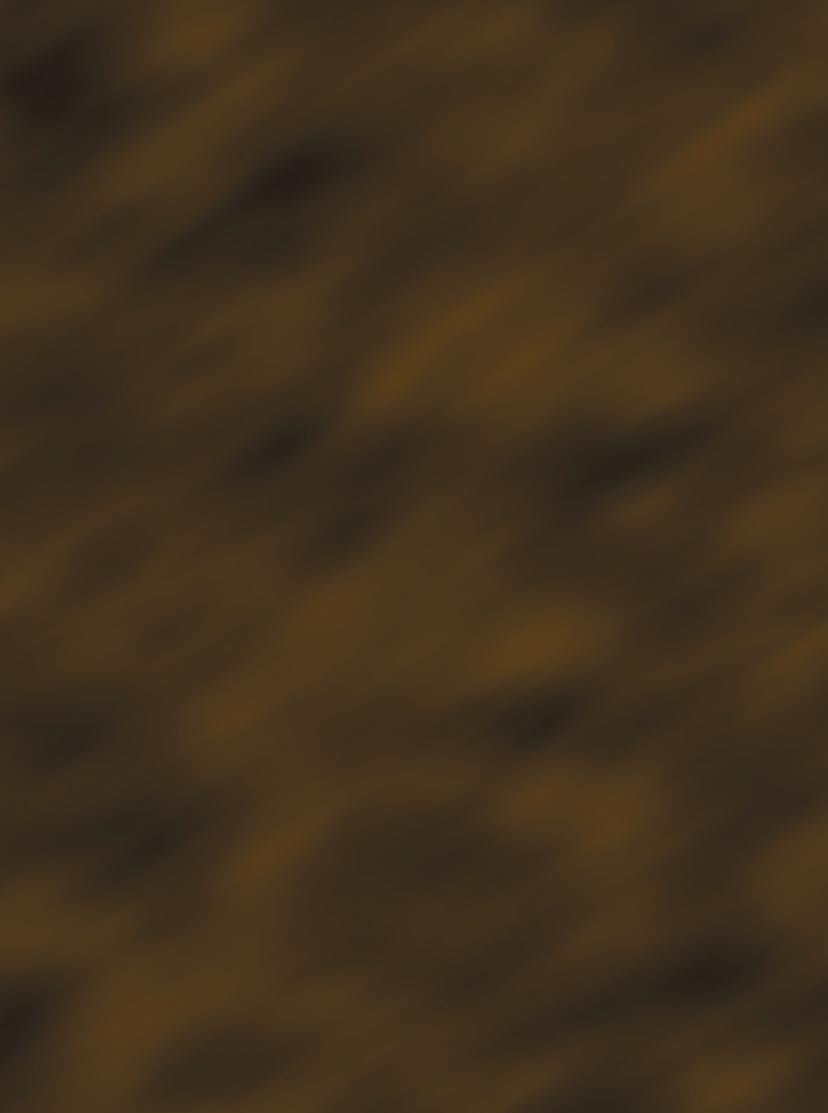
Manufacturer of:
Construction equipment
Dams/reservoirs/irrigation Cement
Harbours/offshore structures Other construction materials
Foundations/tunnels Distribution Pipelines/refineries Construction equipment
Structures/steel work
Construction materials
Building (commercial, industrial) Hire/rental of construction equipment
Housing Design
Construction management Earth-moving/open cast mining Deep mining Aggregate production
Others (Please specify) _________________________________________
Rate (Please tick)
RM360.00 - 12 issues of JURUTERA
RM84.00 - 2 issues IEM Journal (Half-yearly)
Terms and Conditions:
1) The subscription is to be prepaid.
2) Please make cheque payable to Dimension Publishing Sdn. Bhd.
3) Subscriptions are not refundable.
4) Magazine/s will be sent to the mailing address given.
5) Students are entitled for a 20% discount from the above subscription rate.
6) Students must submit a photocopy of the student identification card together with the payment.
7) The above rate is inclusive of delivery charges and applicable in Malaysia only.
8) Additional delivery charges will apply to overseas subscribers.
For subscription enquiries, please contact +603-7493 1049 or email to info@dimensionpublishing.com























